If you’re looking for a stylish nightstand with plenty of storage (without spending a fortune) this is the Ikea hack for you! Find out how we took this Ikea Malm chest from boring and basic to designer-inspired nightstand in this step by step tutorial.
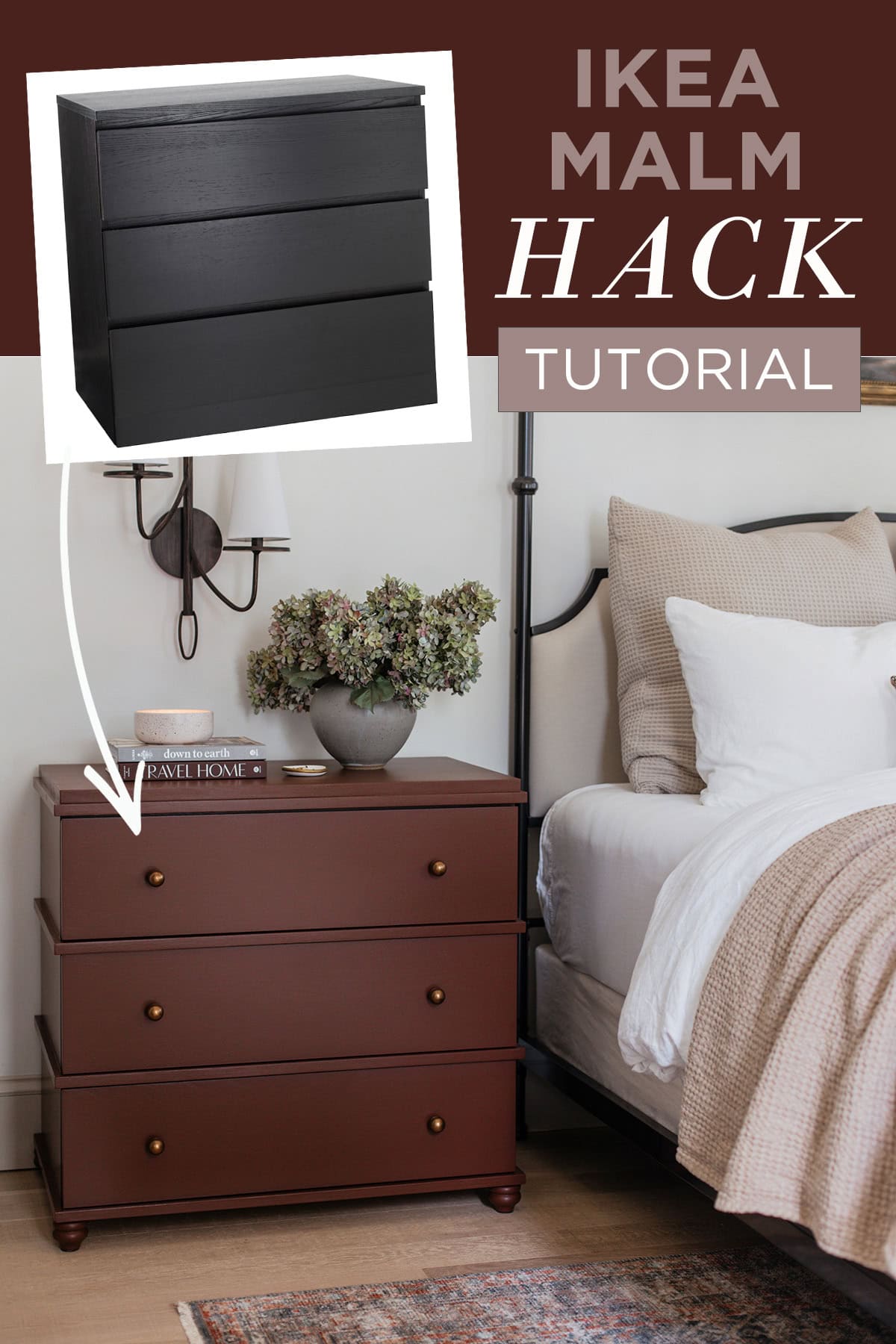
There is a serious shortage of beautiful, substantially sized nightstands (at least 30″ wide) at a decent price point. Most nightstands are 24″ or less and can look off scale with queen or king size beds (IMO)—plus, lots of storage is a must for me. Designers often use ‘bachelor chests’ as an alternative, and I came across this beauty that reminded me a lot of the Ikea Malm… could you see the potential?
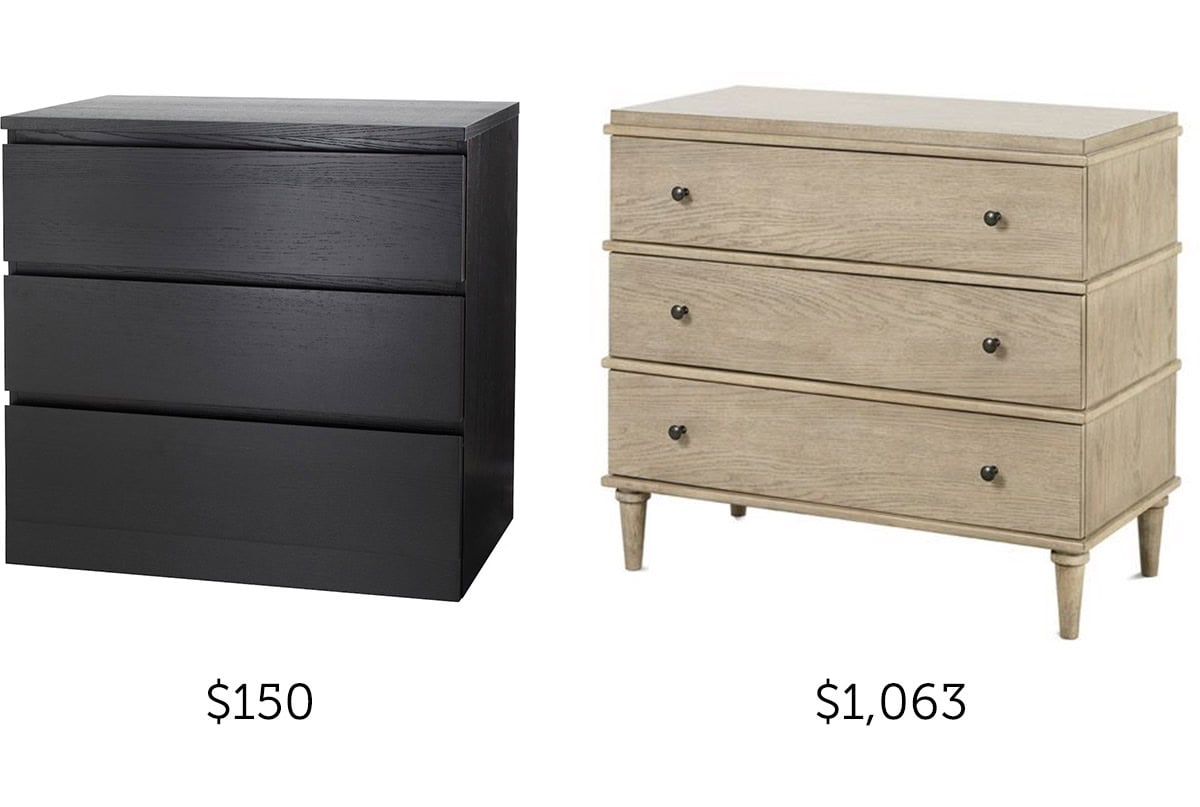
They’re nearly the same size, and the black/brown finish is made with real wood veneer which is ideal for painting. Malm chests are mass produced and very common to find used on your local Facebook Marketplace or OfferUp, if you want to save $$. There were several listed in my area, but I wanted to be certain that ours was in perfect working condition so we paid full price at our local Ikea.
Let’s get right into it!
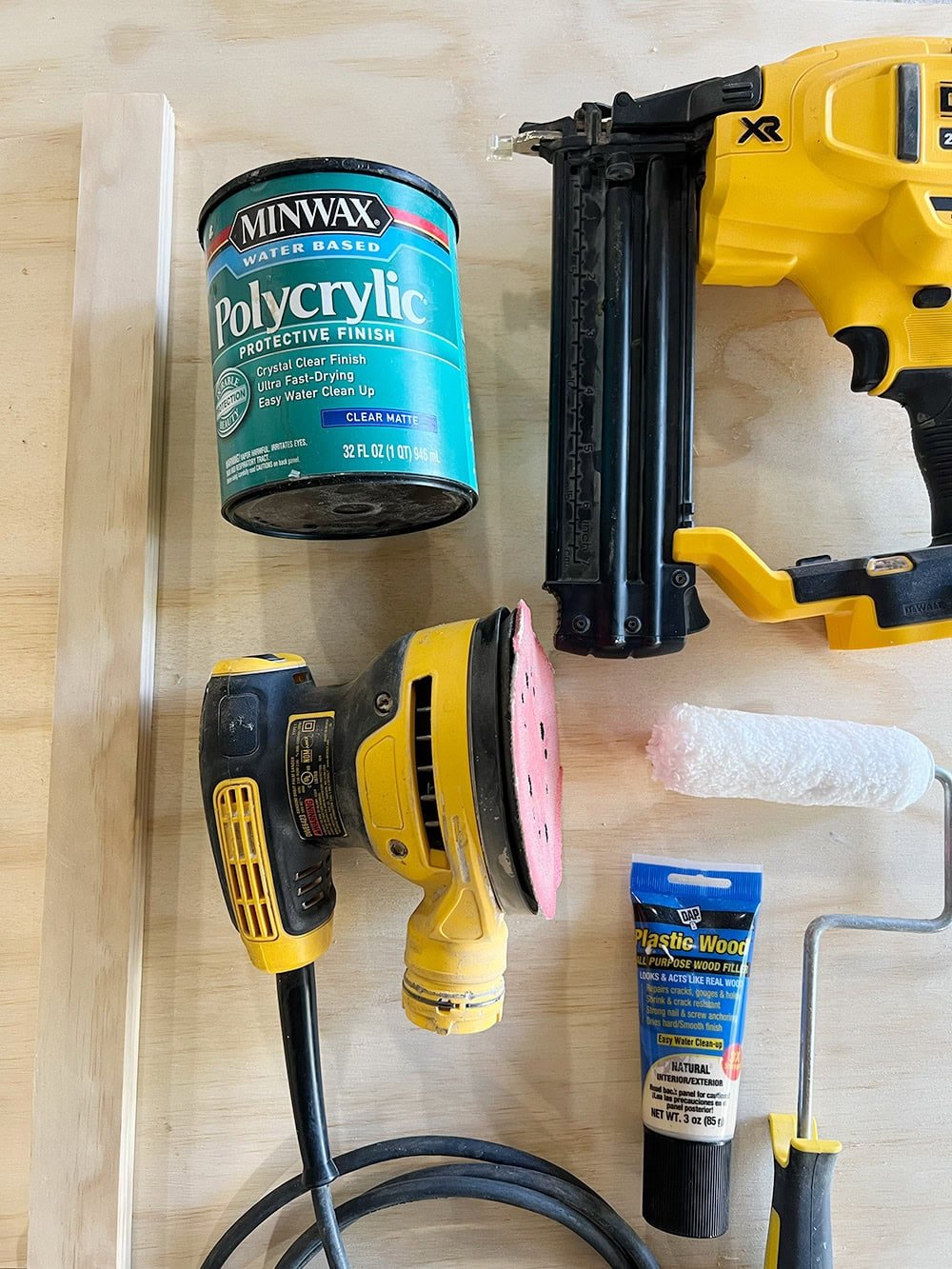
Jump to:
Supplies
- Ikea Malm 3-drawer chest (black/brown or stained oak)
- 3/4” 1x6x6’ select pine board
- 3/4” 2×4’ plywood
- Furniture feet (optional)
- Cabinet knobs
- Edge banding
- 100 + 220 grit sandpaper
- Wood glue
- Wood filler
- Primer + Paint
- Paint brush + roller
- Sealer
Tools
Step 1: Trim down dresser height
This step is optional if you don’t plan to add furniture feet. The Malm chest is 31 3/4” tall which is about the max I’d want as a nightstand, so I didn’t want to raise it up any more. We planned to add a wood base to reinforce the bottom, and attach feet to that.
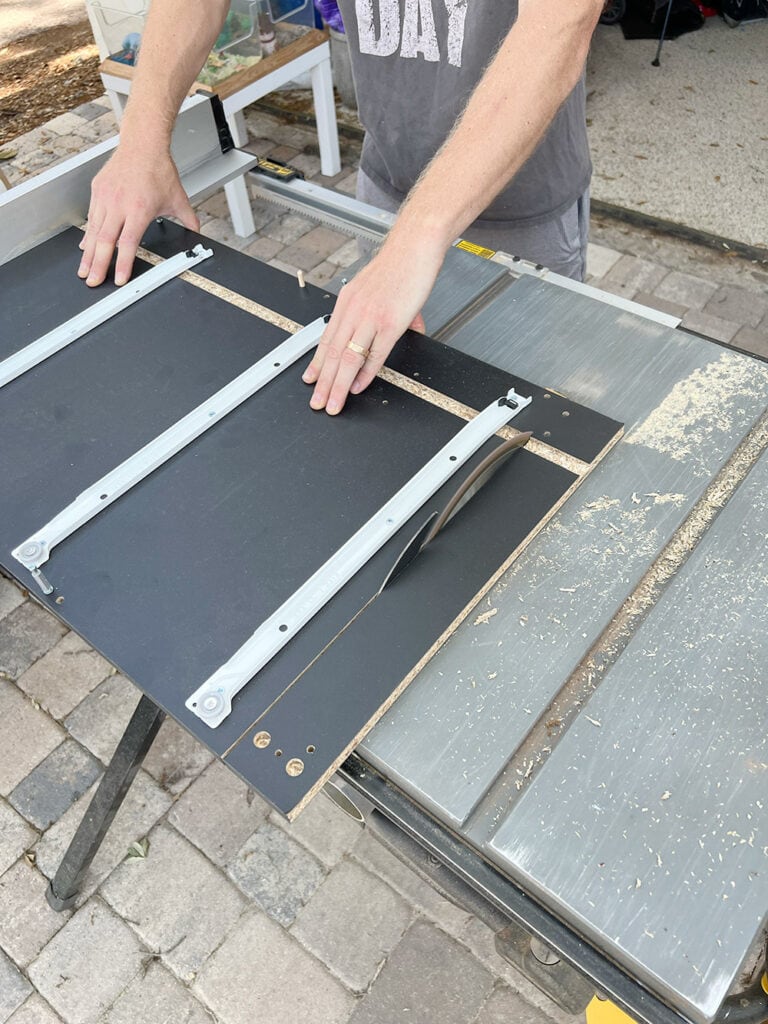
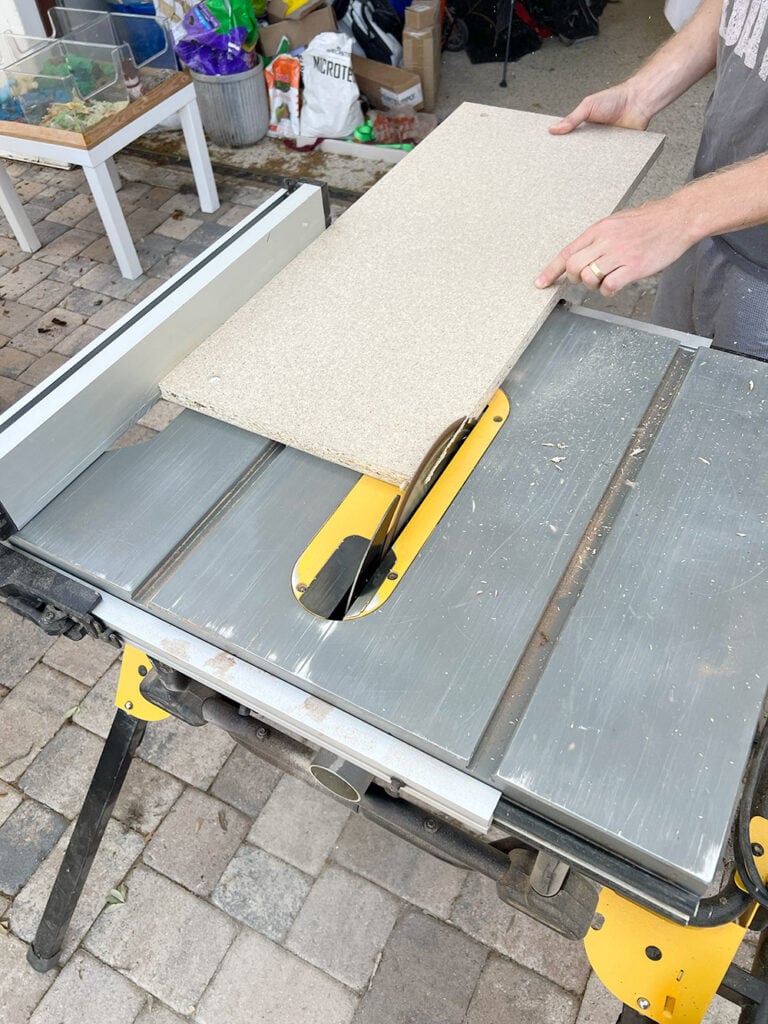
Before assembling the chest, set your table saw to 2 9/16”, and run both sides and the lower back piece through. This measurement is 1/16” below where the bottom drawer sits, so the new base will be at the perfect height.
Step 2: Sand and assemble
Technically sanding is also optional, but I’d highly recommend it for better paint adhesion. I chose the black/brown Malm because it has a layer of real wood veneer, and the stain/lacquer can be sanded off. Bare wood is the ideal surface for paint to ensure a durable, lasting finish.
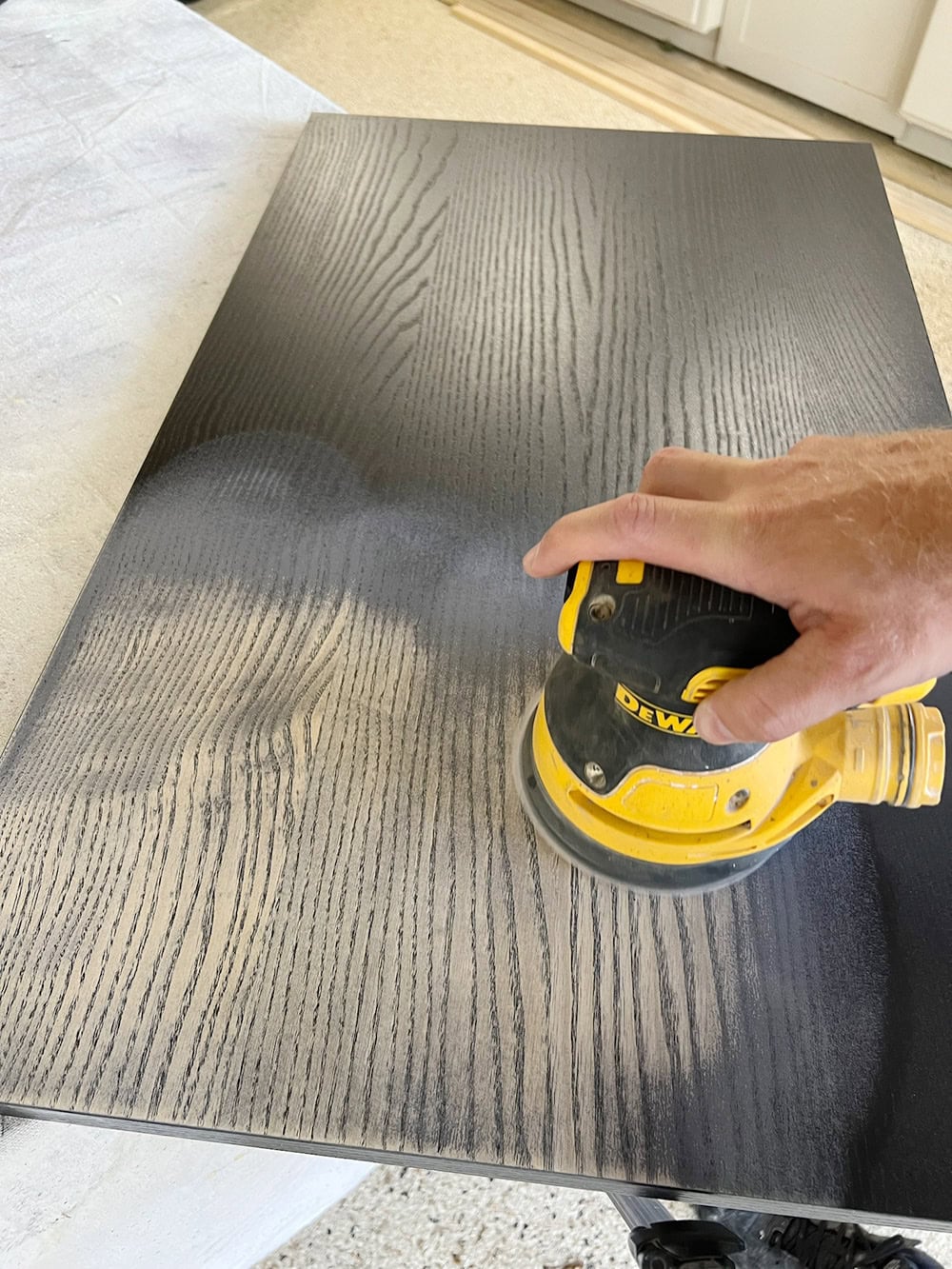
We found it easier to sand the pieces before assembling, but either way works.
Step 3: Rip down 3/4” trim pieces
We used scrap 3/4” pine wood, but any knot-free 3/4” wood is fine. Here’s the cut list (per dresser):
- 3/4” x 1/2” x 18″ (x6) side pieces
- 3/4” x 1 ⅜” x 32 ½” (x3) front pieces
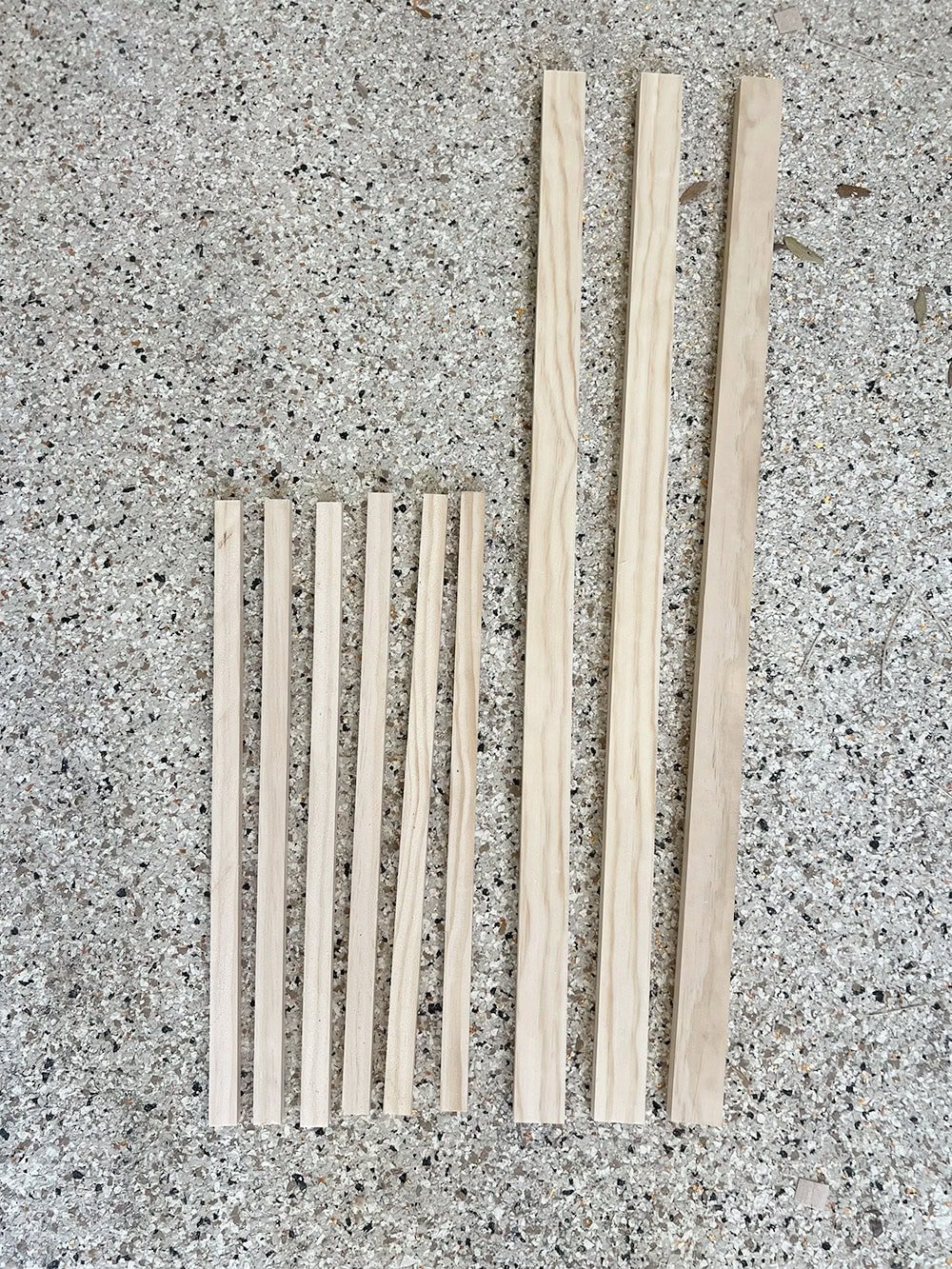
With these measurements, the side pieces project 1/2″ from the dresser, and the front pieces extend 3/16″ beyond the drawer fronts. Feel free to adjust this to your own preference!
Use an orbital sander with 100-220 grit to smooth out any saw marks and sharp edges.
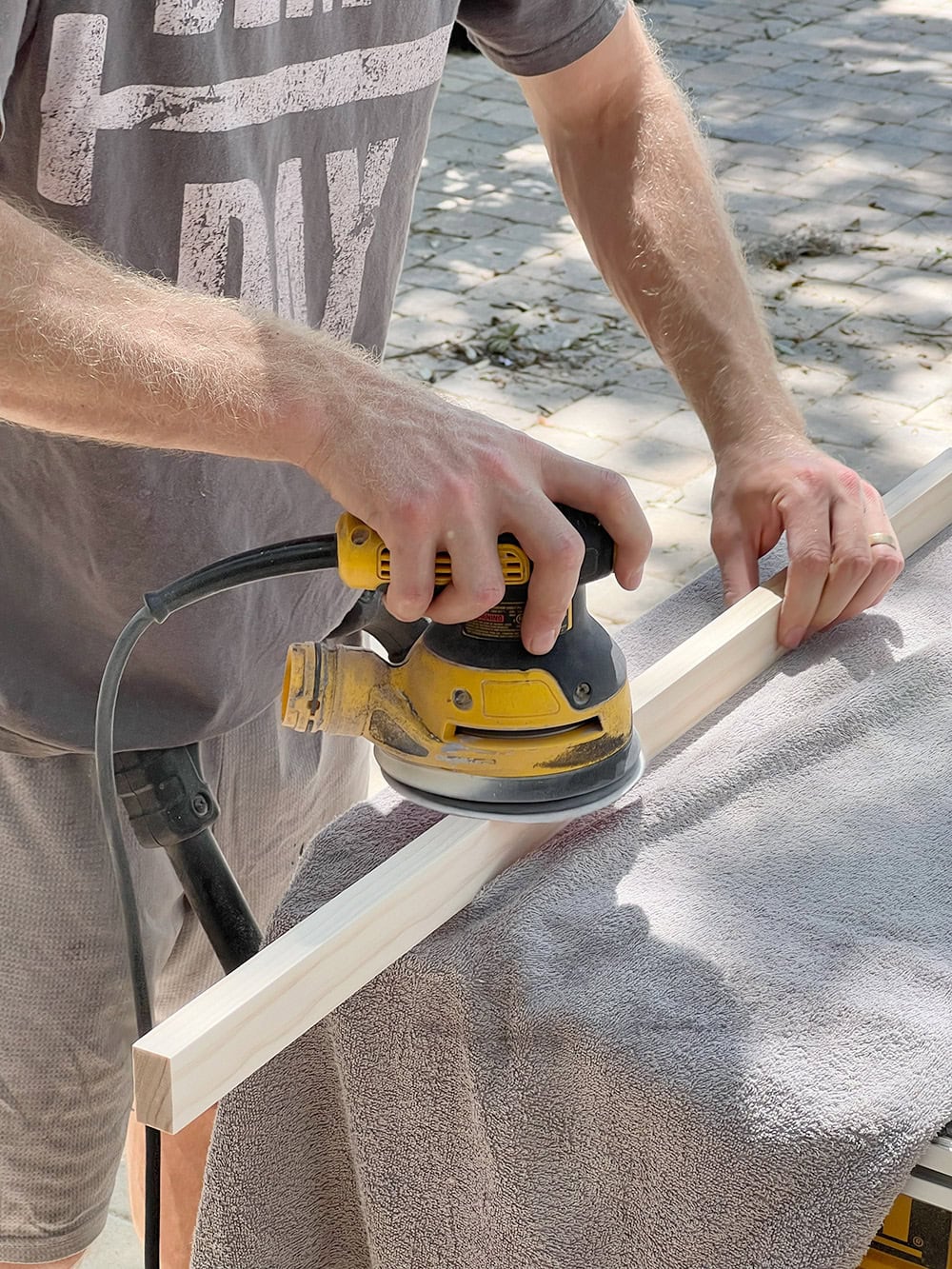
Step 4: Attach front and side trim pieces
Apply wood glue to one of the side pieces and use bar clamps to hold it in place. We started at the top.
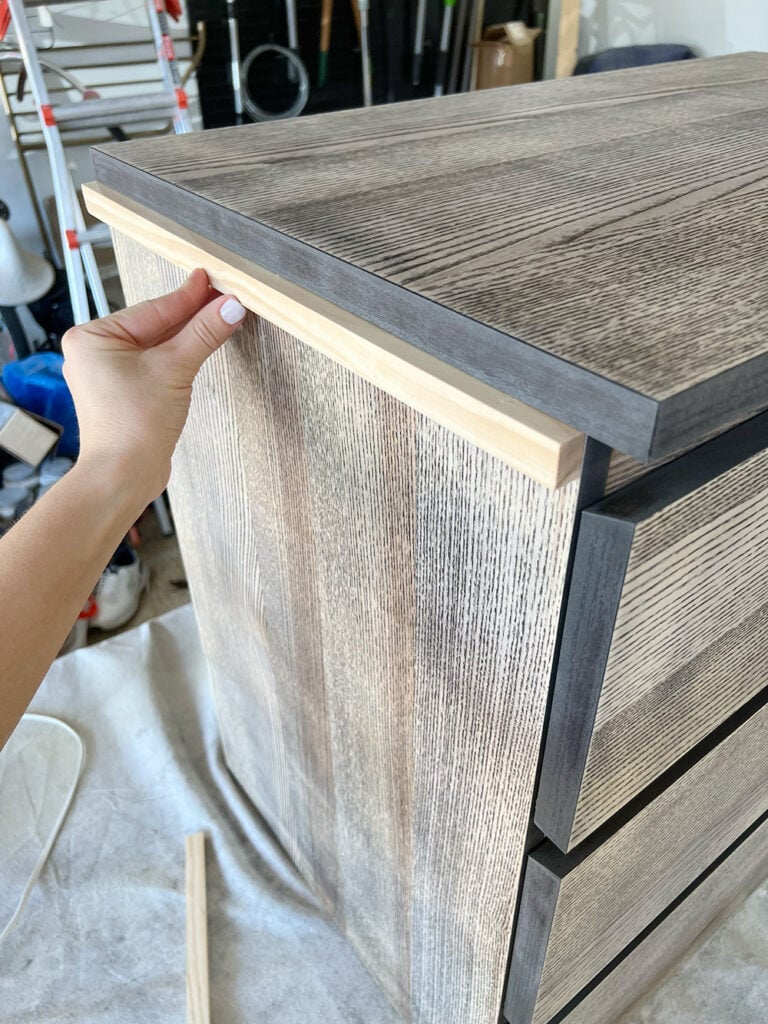
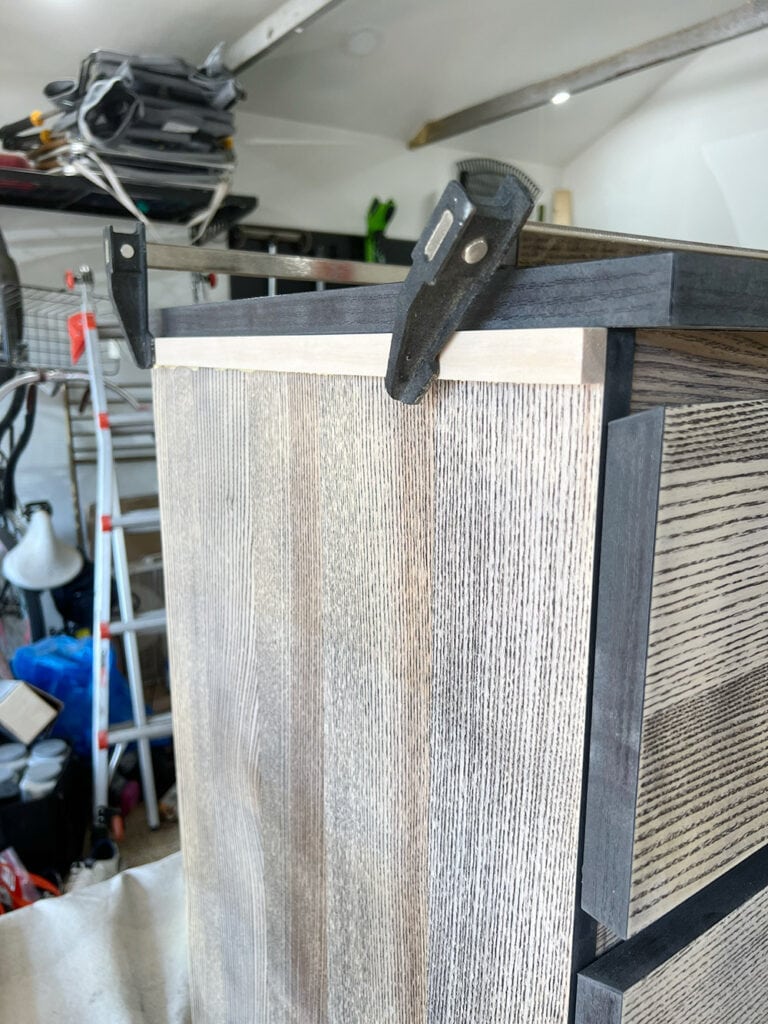
Use finish nails to secure it.
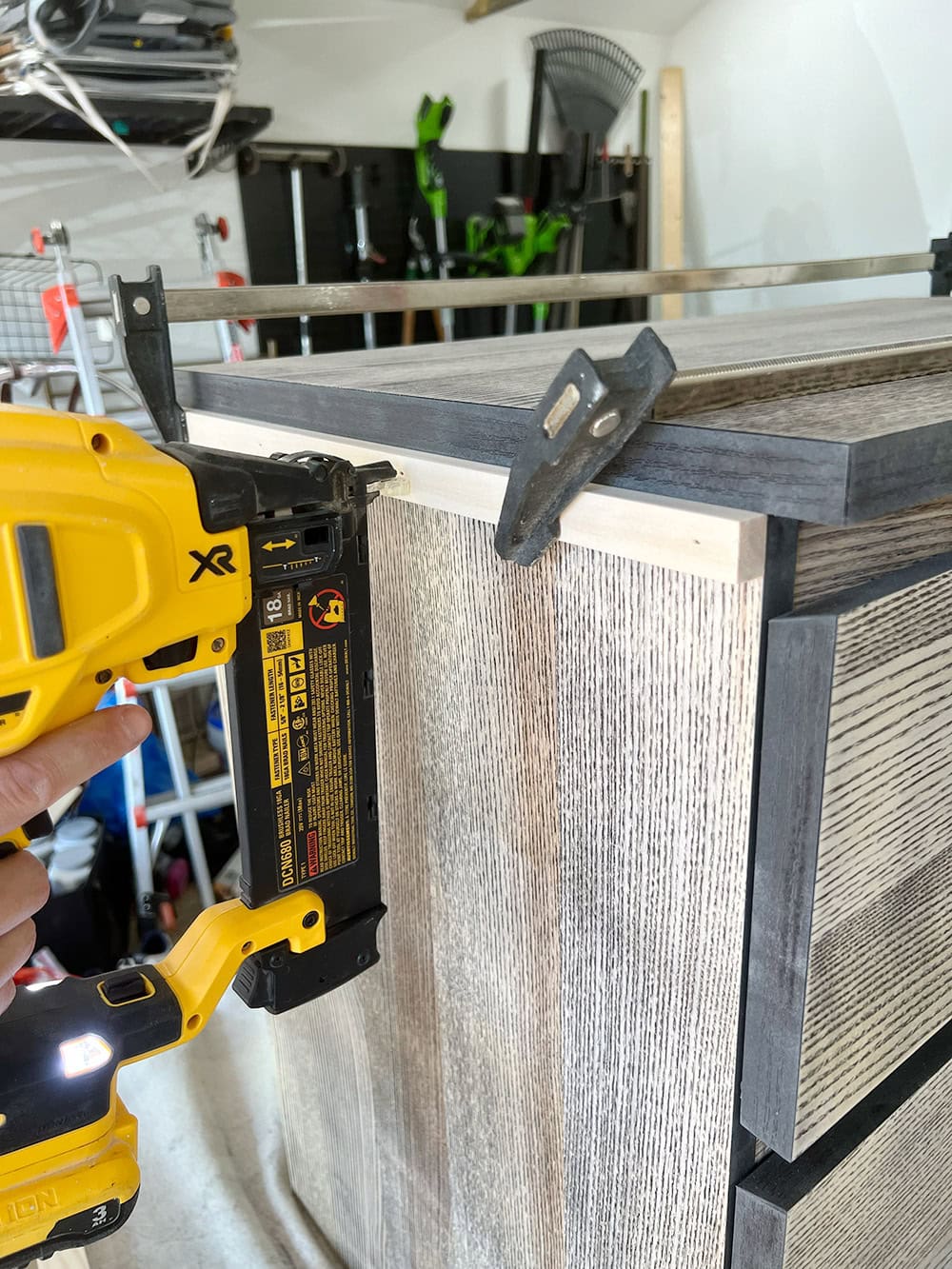
Repeat the process on the other side.
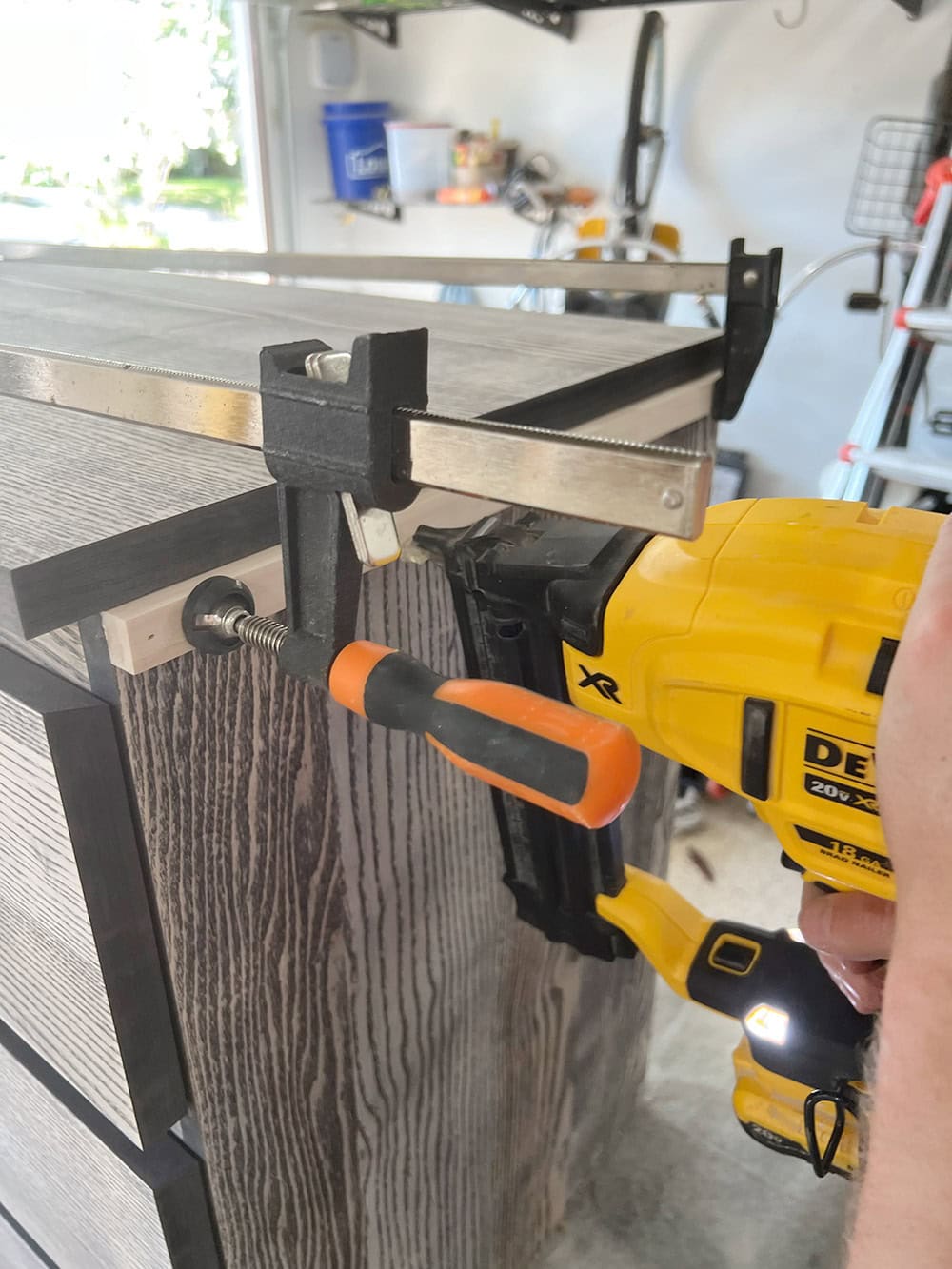
Add the front trim piece, making sure to line it up evenly on both sides. Clamp it to the top of the dresser and nail in place.
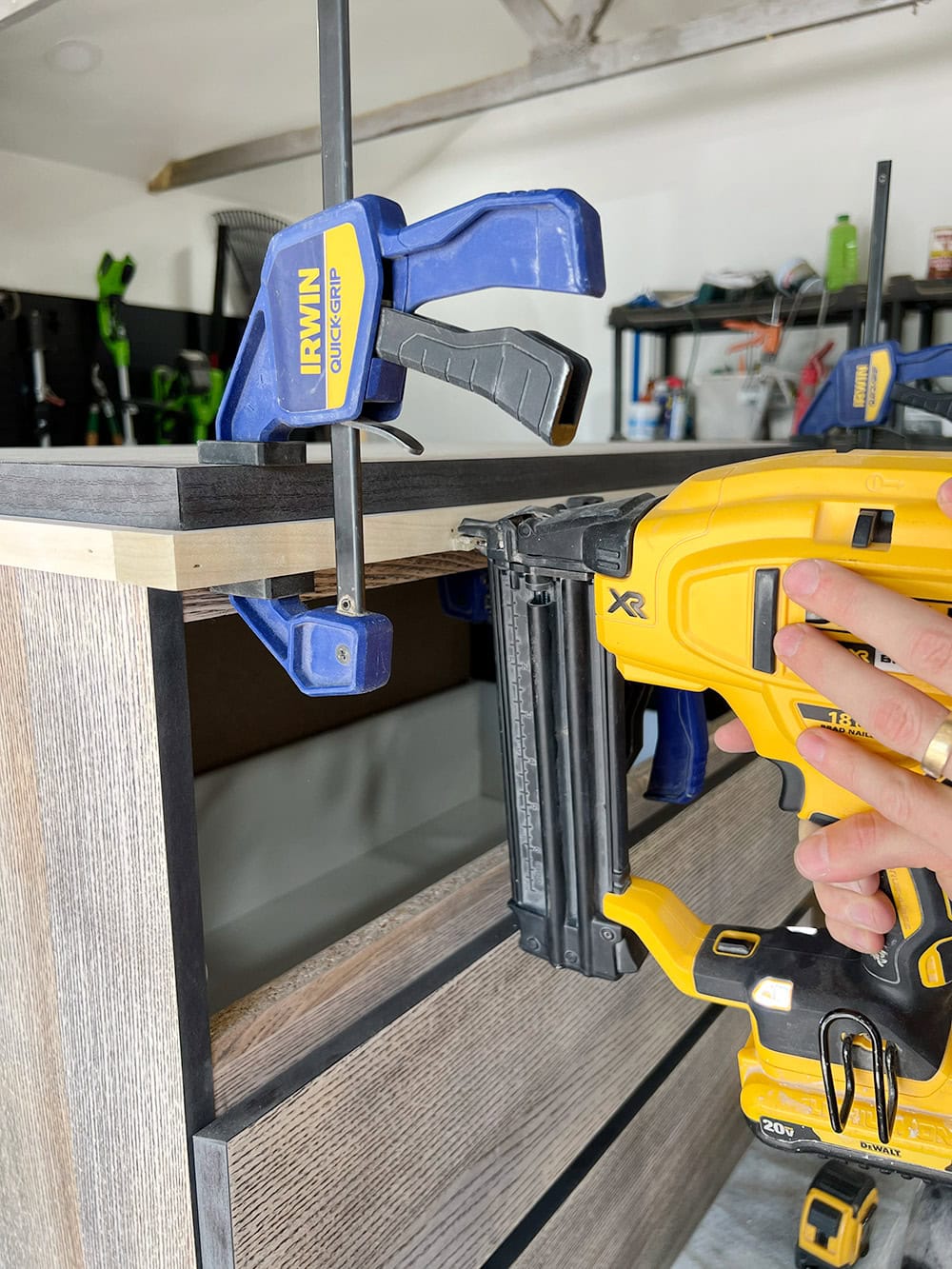
Since the two lower front pieces rely on the strength of the wood glue, we kept the clamps on for at least an hour to allow the glue to dry before removing them.
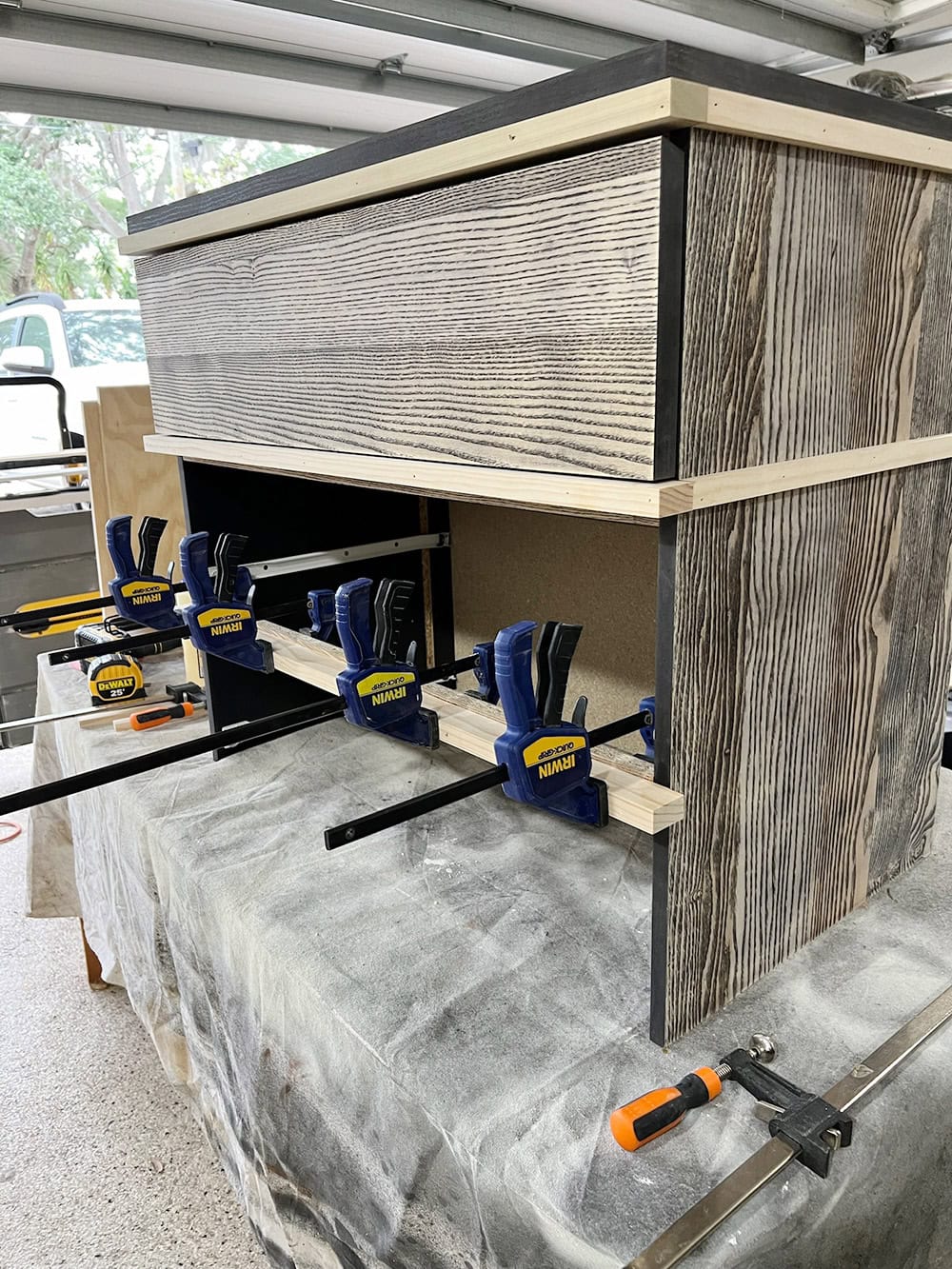
Heres how the finished trim looks:
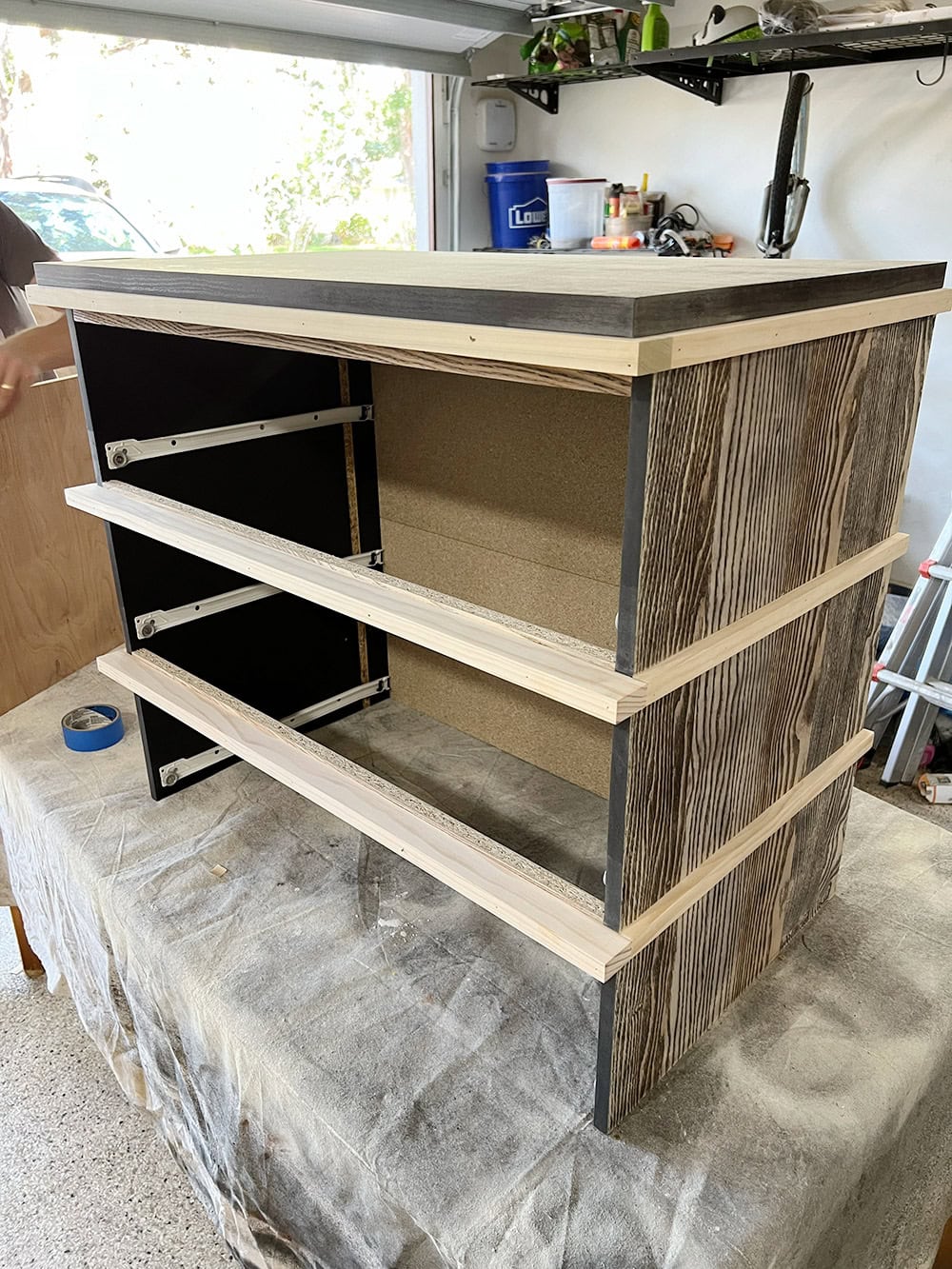
Step 5: Attach the base
Cut a piece of 3/4” plywood to 19½” X 32½”. This matches the length + width of the top trim section.
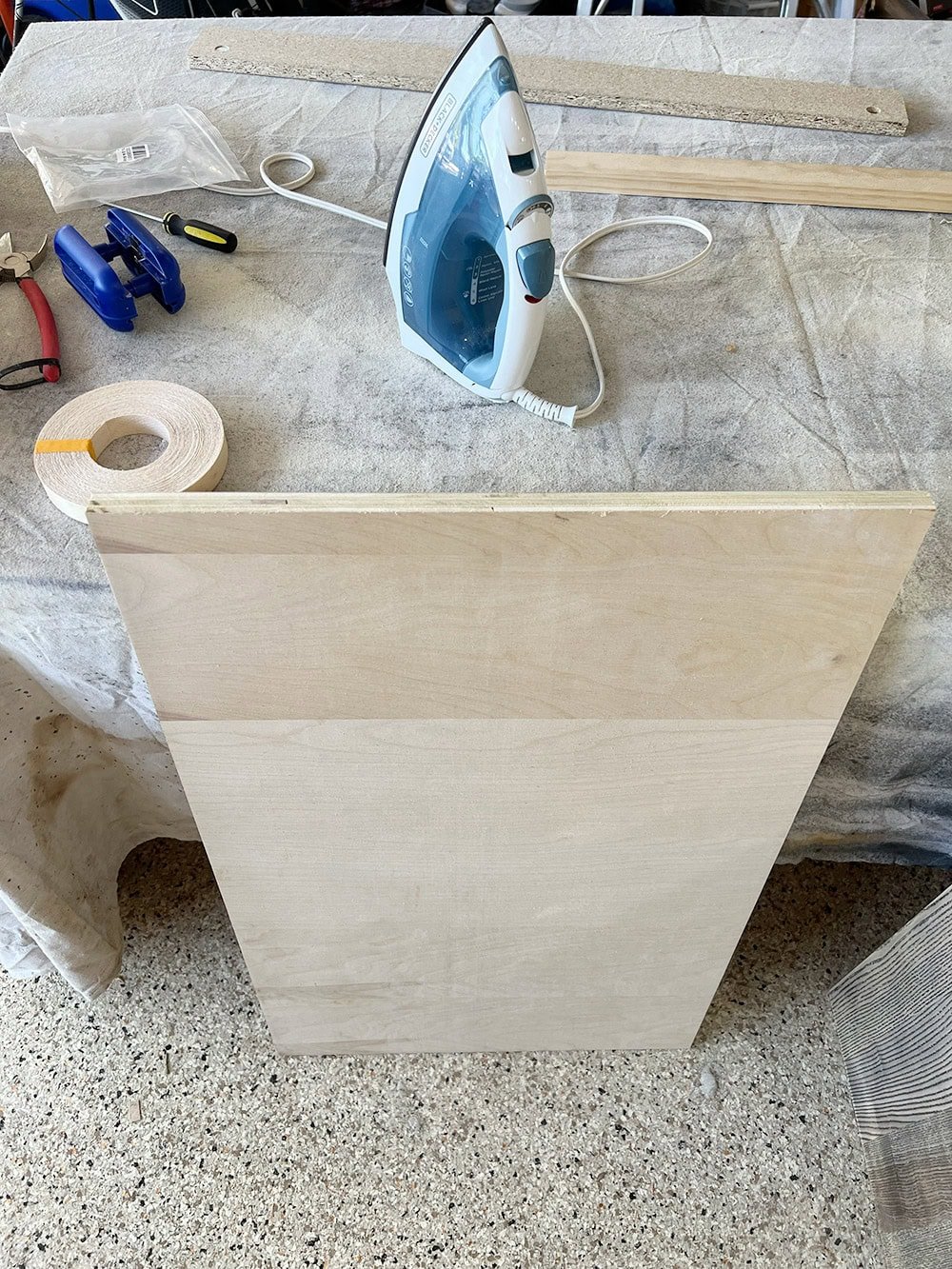
Iron on edge banding to finish off the edges.
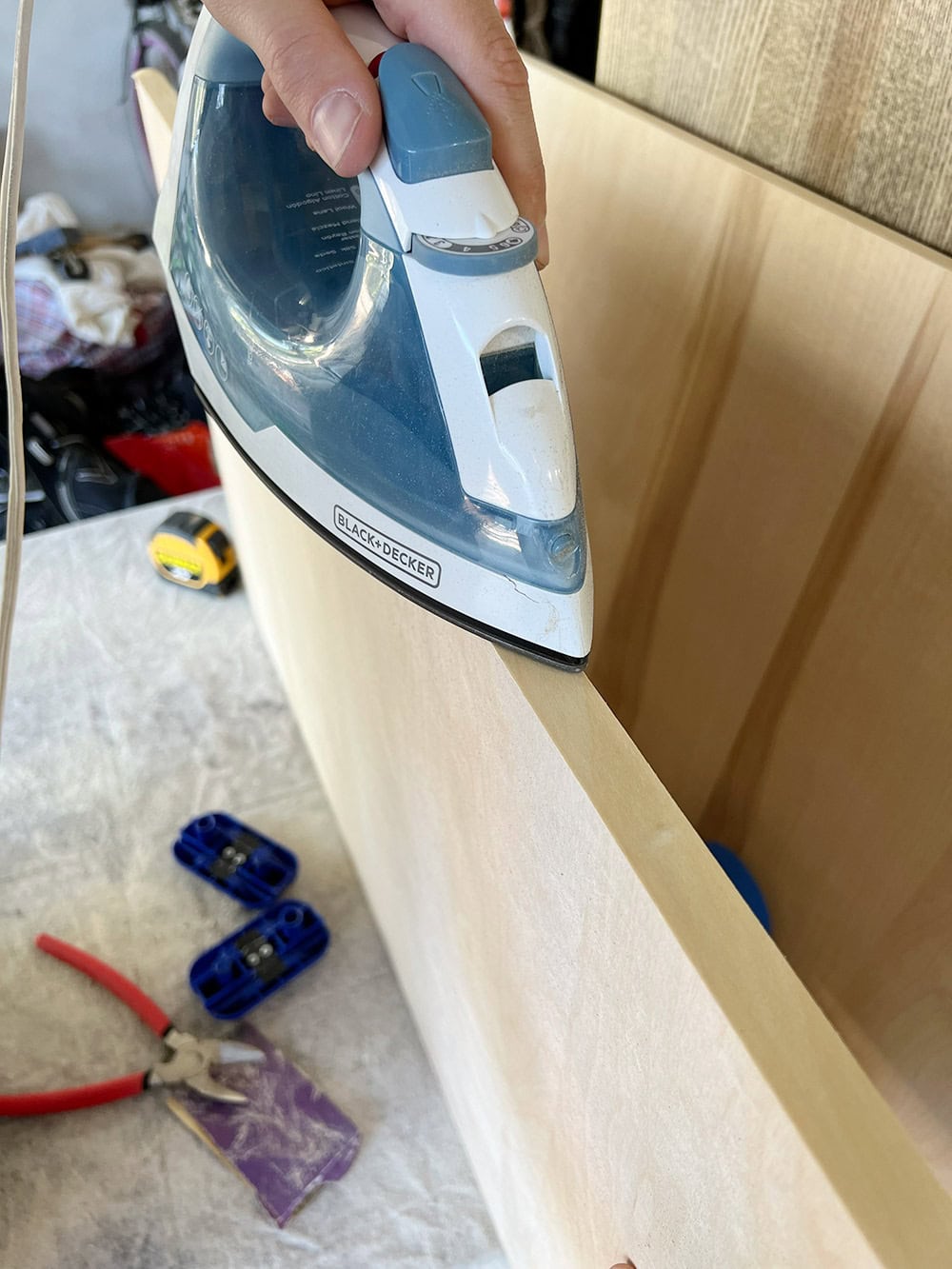
Flip the dresser over, apply wood glue along the bottom and align the plywood base on top. We used a long straight edge to ensure everything matched up on all sides.
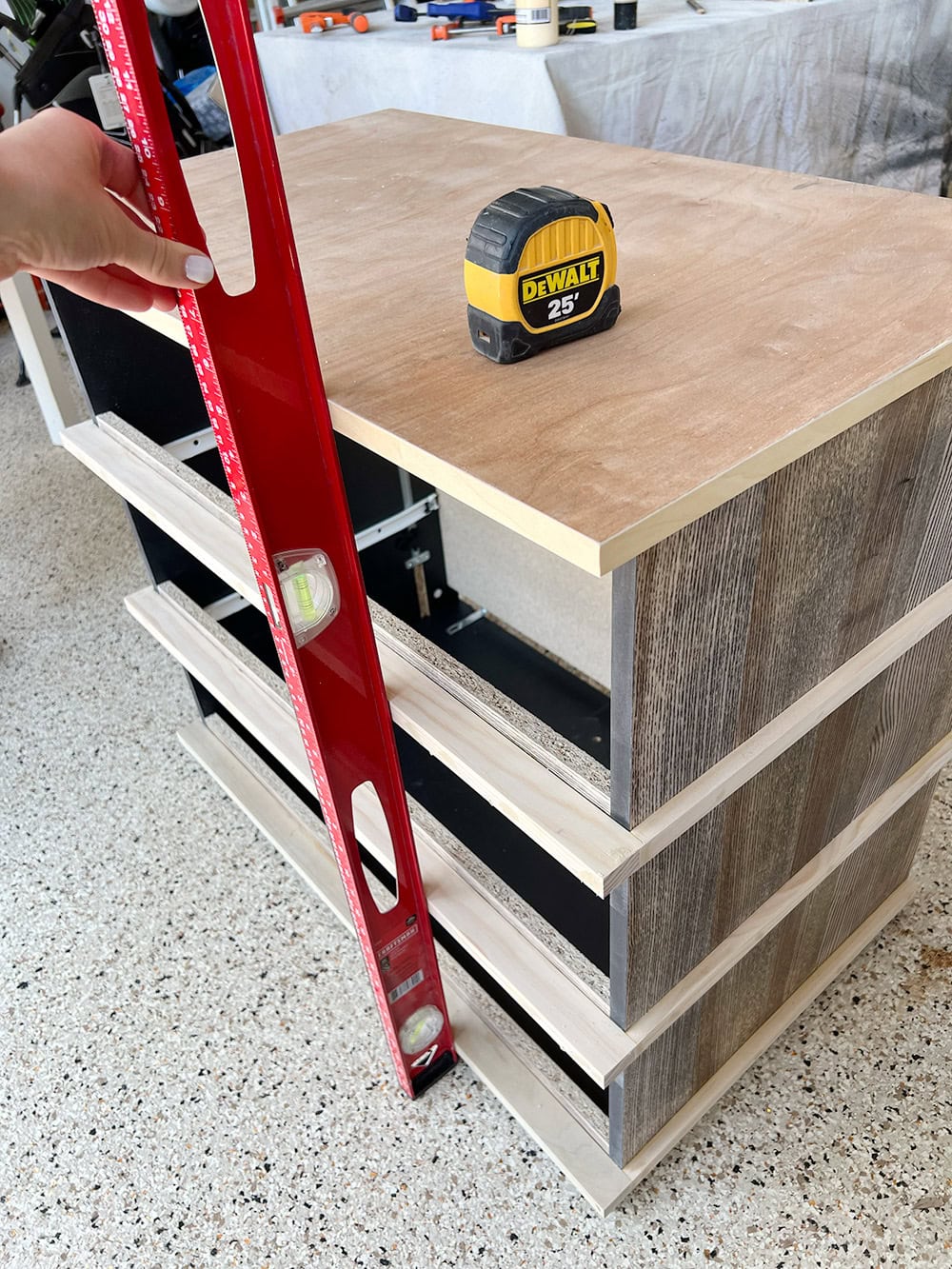
We shot a few nails in first to ensure the wood wouldn’t shift when attaching.
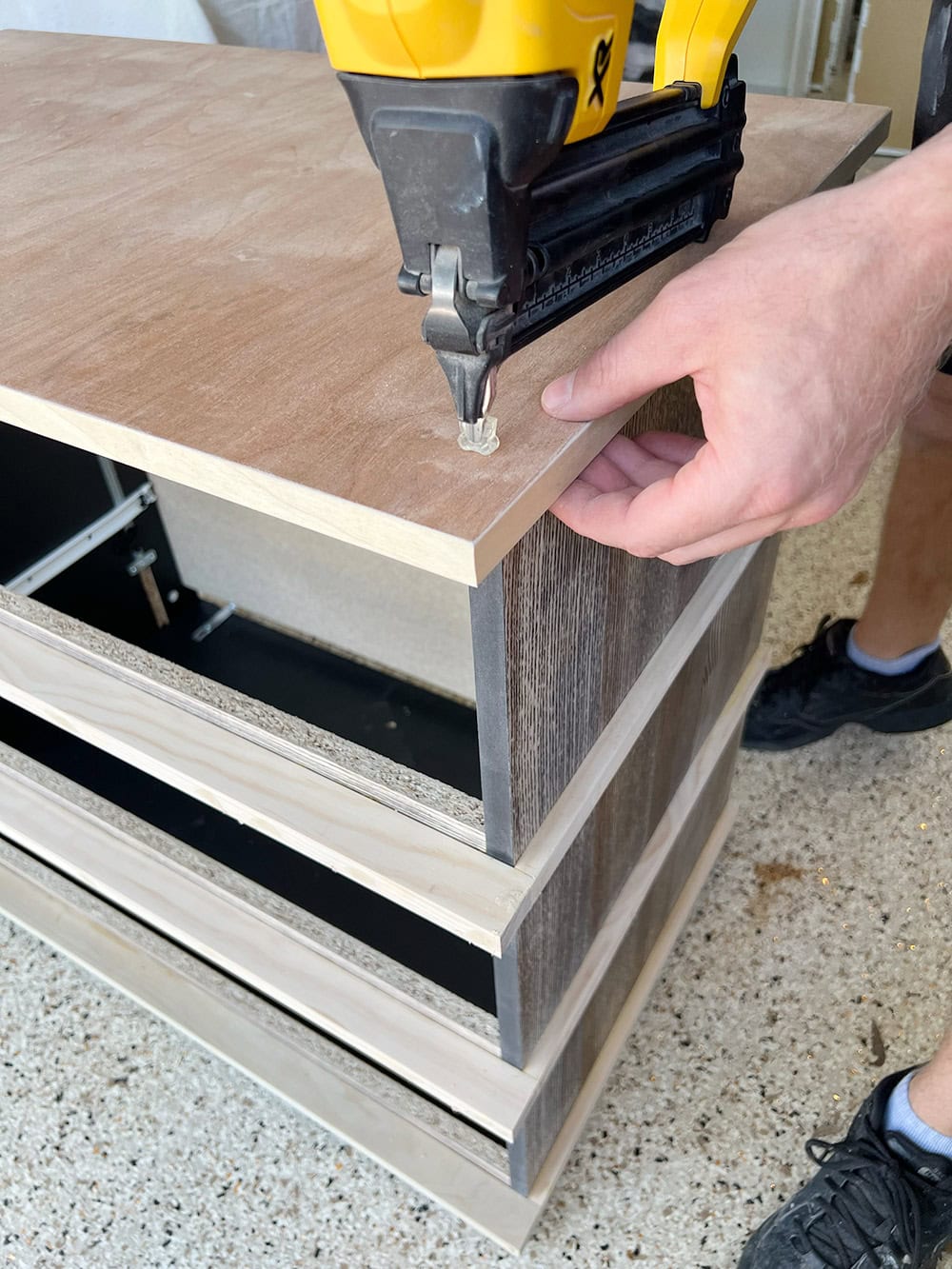
Then, secure the base to the dresser with wood screws (we used two on each side). Pre-drill your holes first, and make sure they are going into the center line of the sides below to avoid splitting.
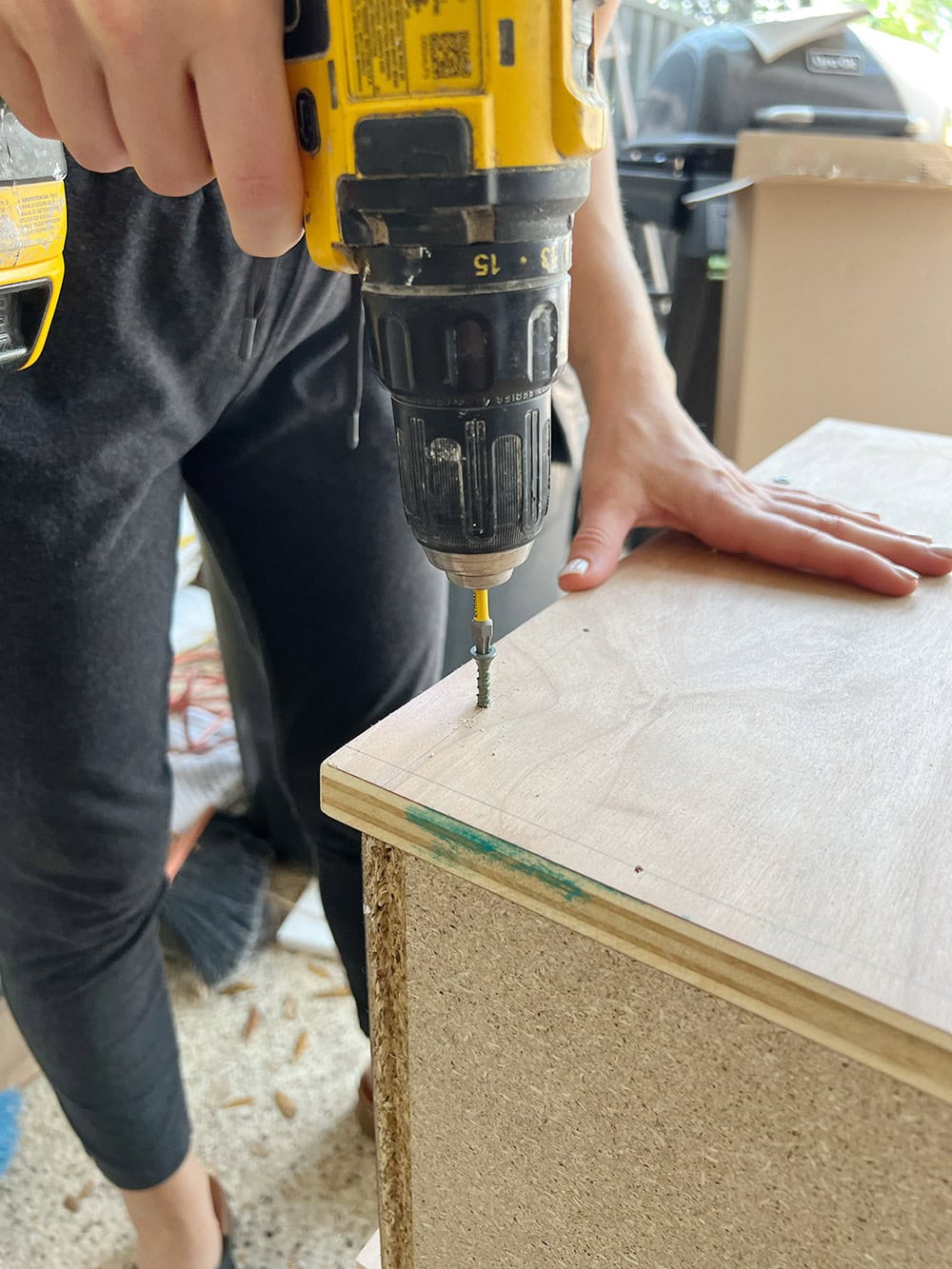
Step 6: Add legs
I found these cute 2” wood legs on Amazon and bought two sets. I think they really elevate the style of a dresser (literally and figuratively 😉)
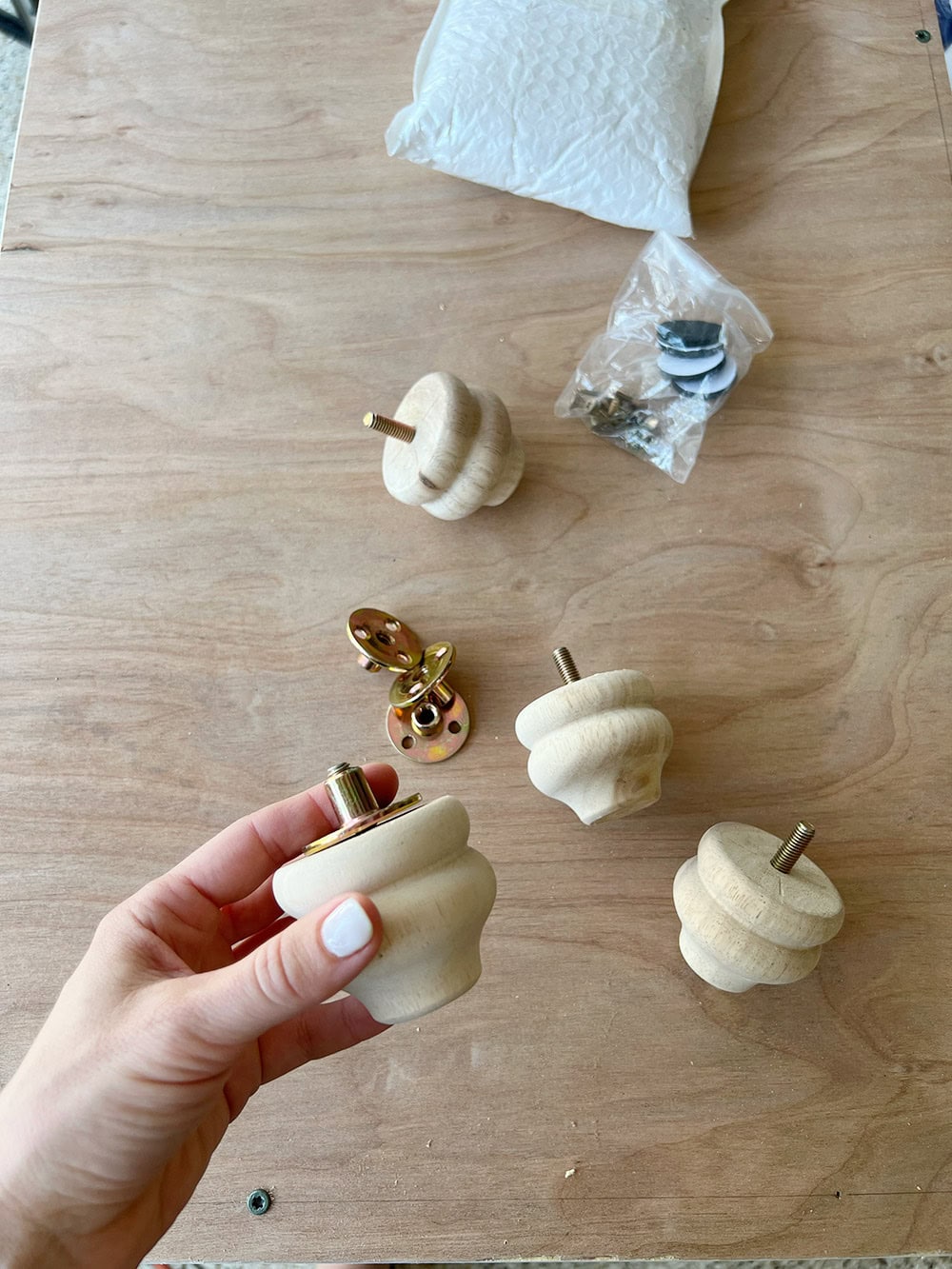
The final dresser dimensions end up at 32½” w x 19½” d x 30¾” h. Nice and substantial enough for any size bedroom!
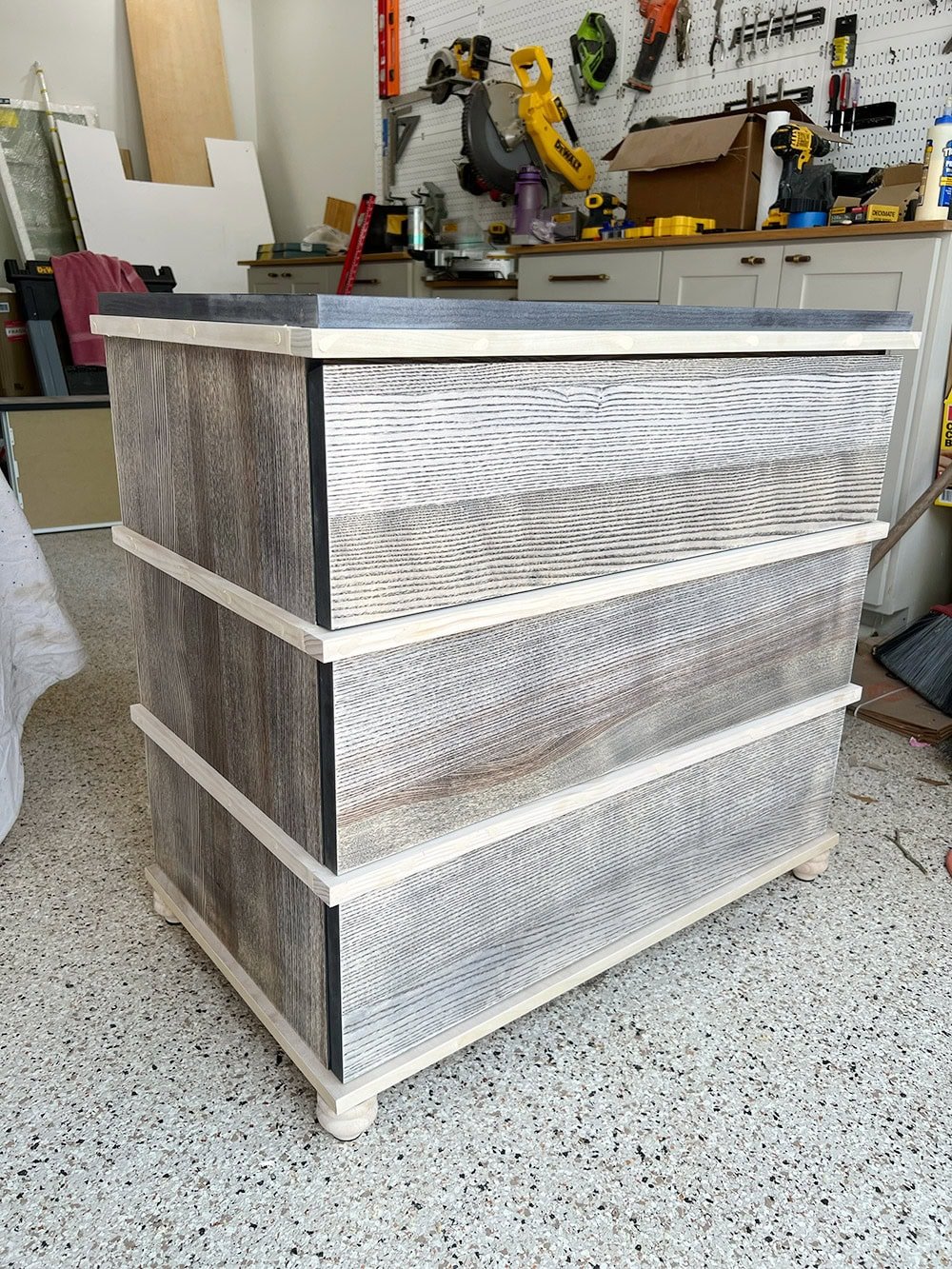
Step 7: Fill nail holes and sand
We filled the nail holes and seams with plastic wood, then sanded everything smooth with 220 grit. This is our go-to technique for a beautiful seamless result.
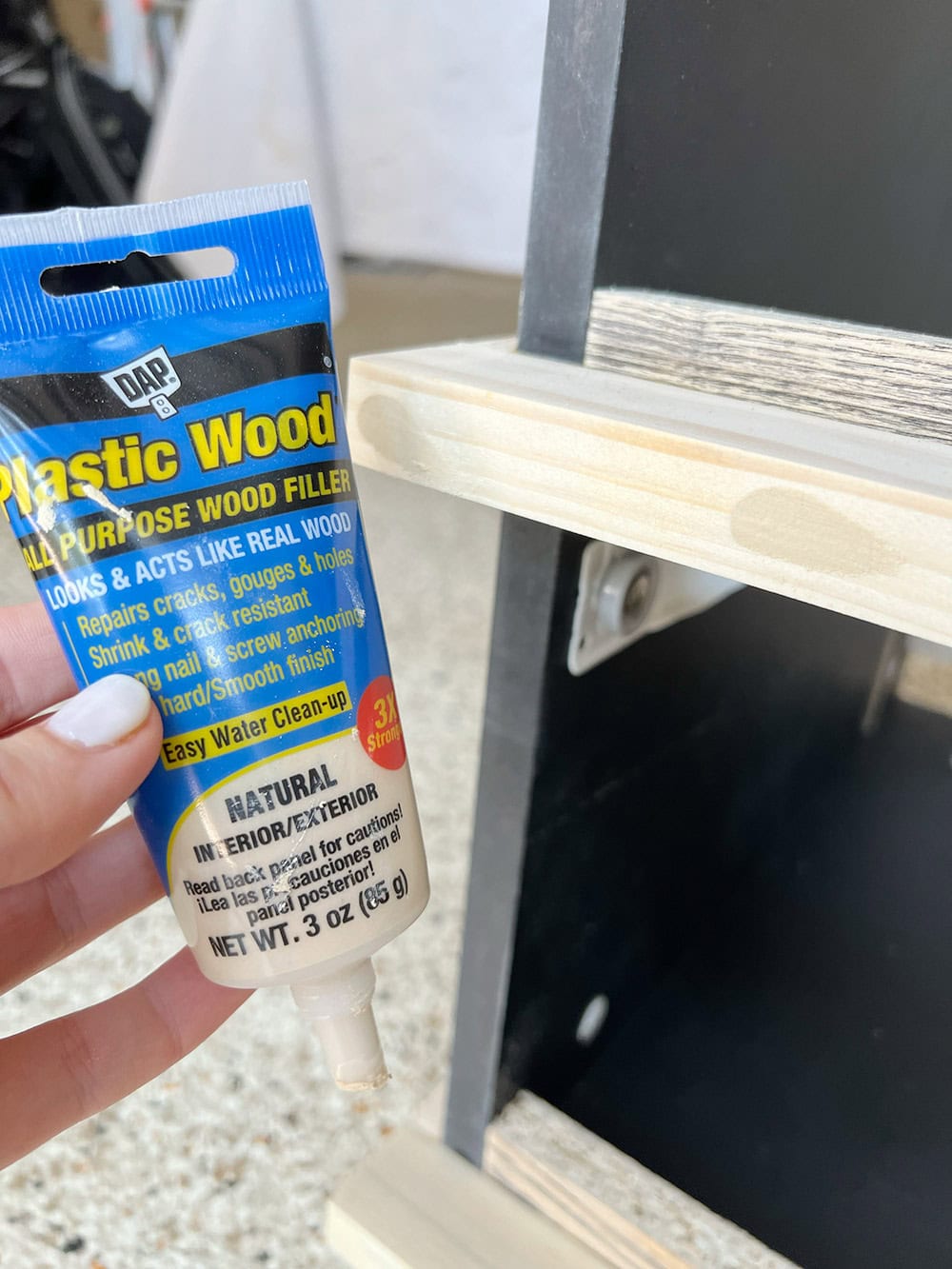
Step 8: Prime, paint, protect
Priming is always a good idea, particularly with furniture that receives heavy use. Little Greene Paint Company sent me primer and paint from their new Sweet Treats collection to try out.
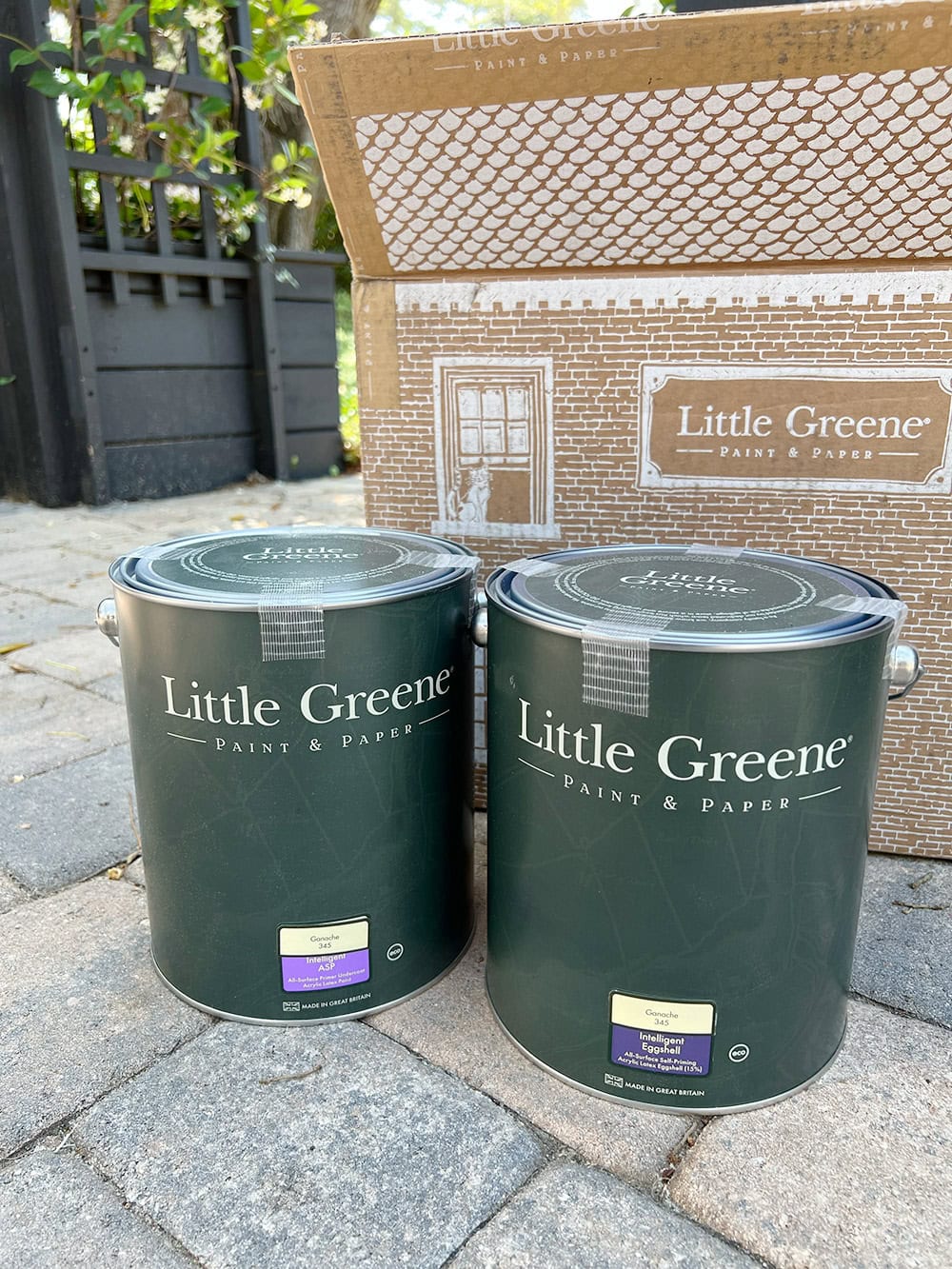
The primer is water based for easy cleanup, and they were able to tint it to match my paint color which was a nice bonus.
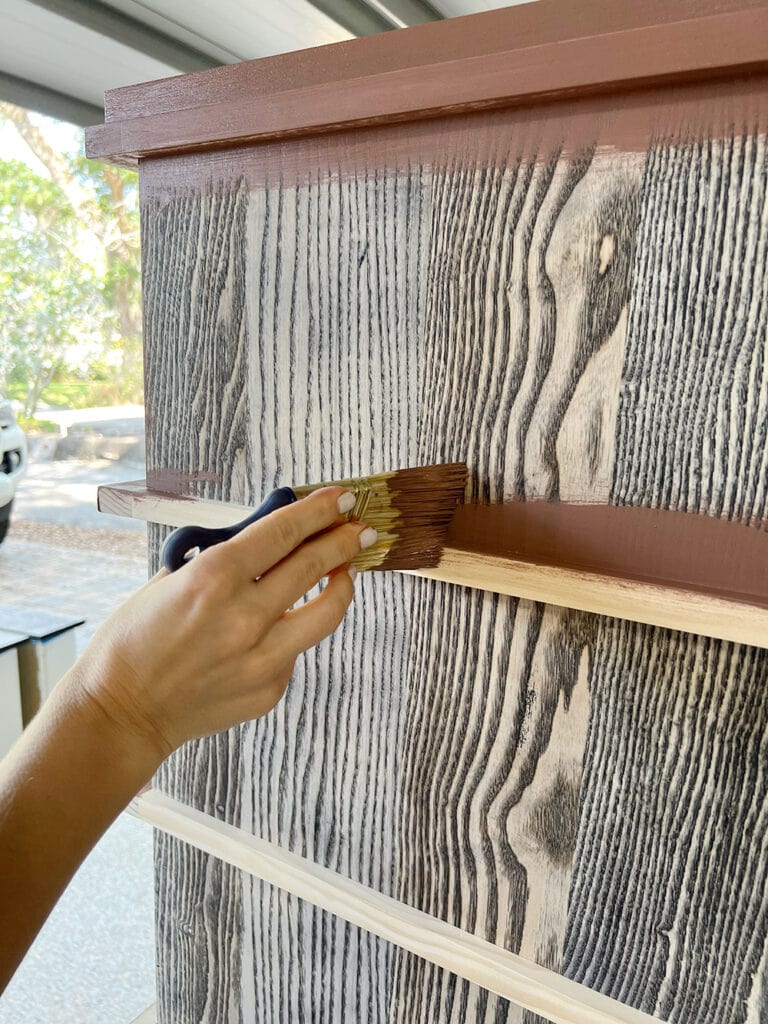
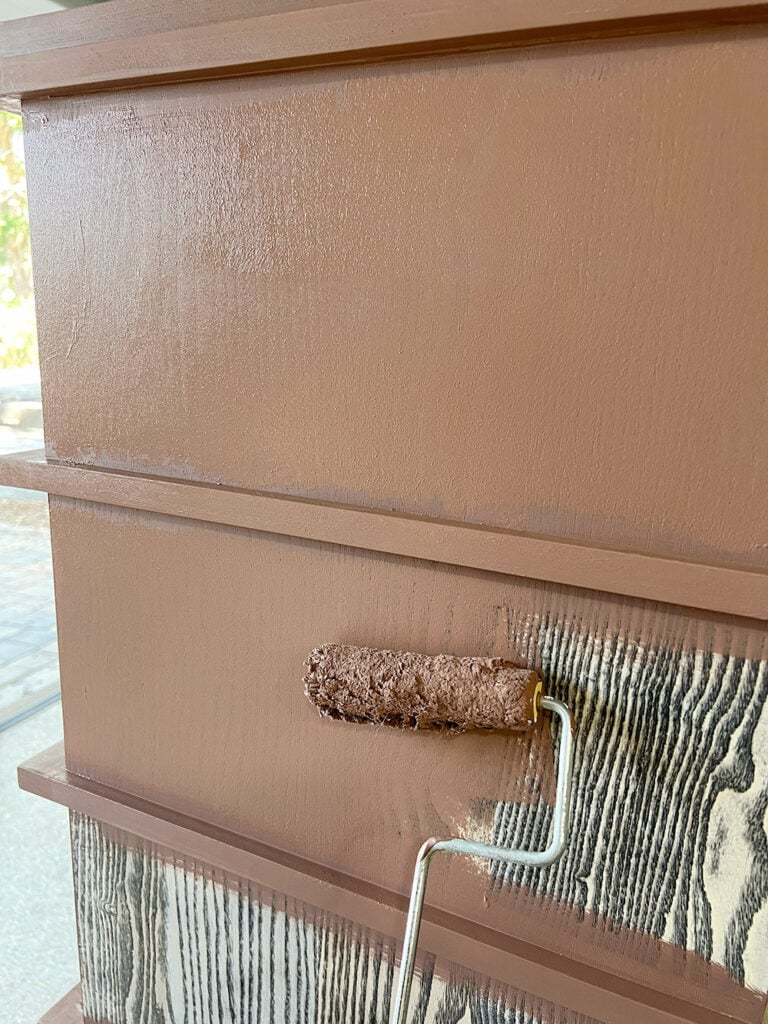
I’ve been really digging rich brown and burgundy tones lately, so I was excited to try the color Ganache (in eggshell) out on a piece of furniture! The right paint color can be a great alternative to get the same feel of dark natural wood.
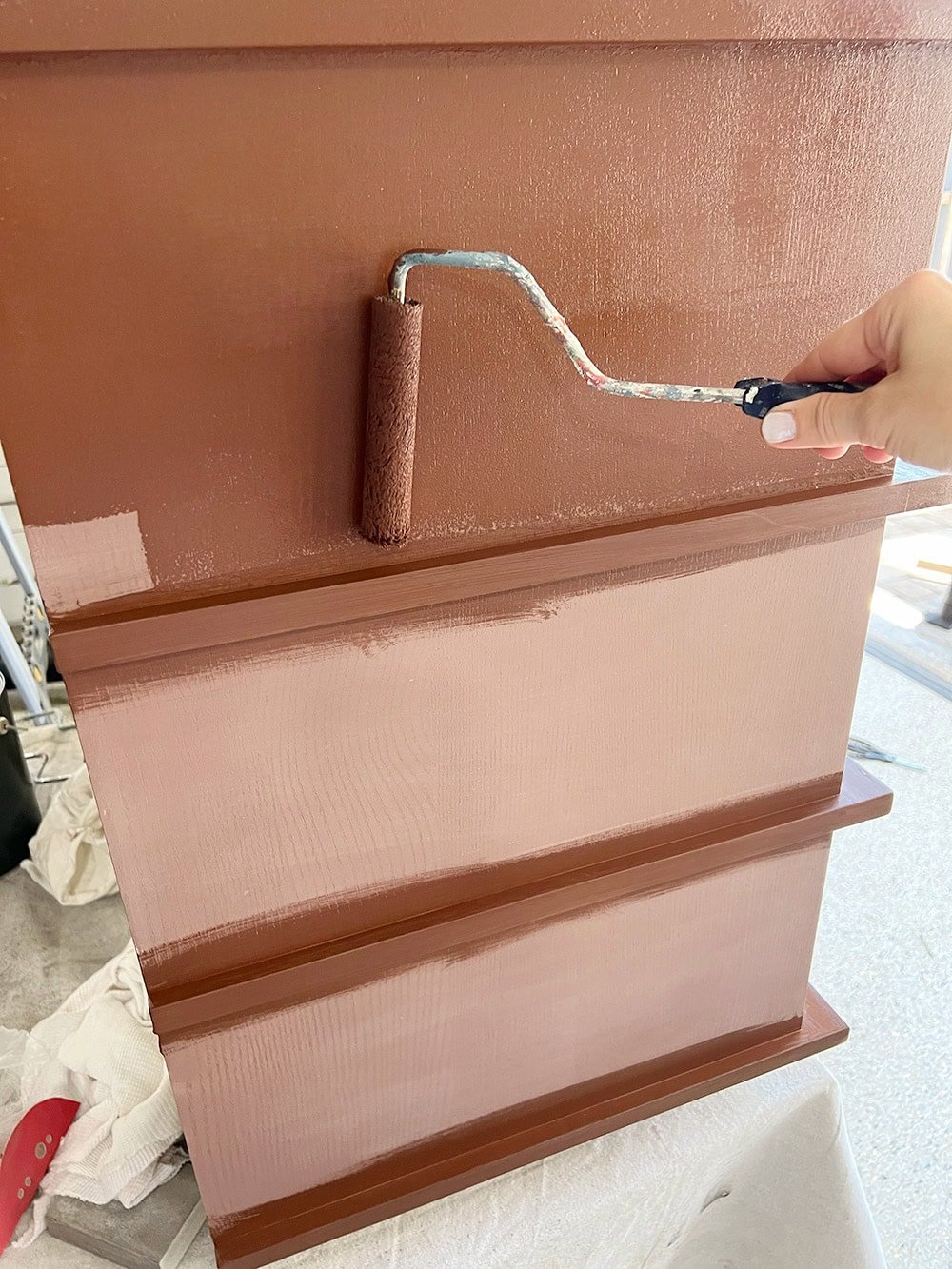
Check out my Furniture Painting Guide to learn the exact tools and steps we use for a professional, lasting finish. One coat of primer + two coats of paint later…
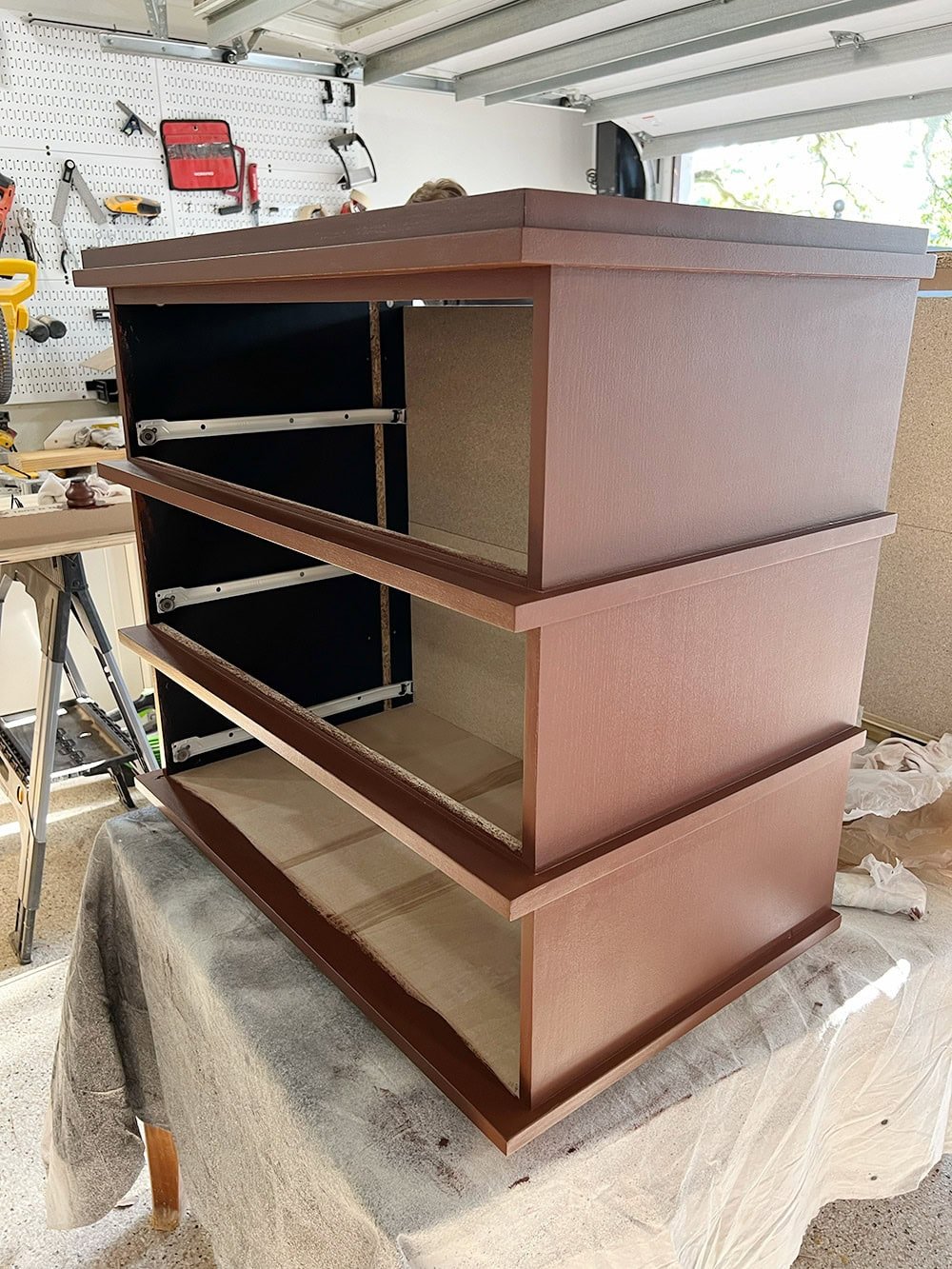
After the paint dried overnight, I finished it off with three coats of matte polycrylic for protection.
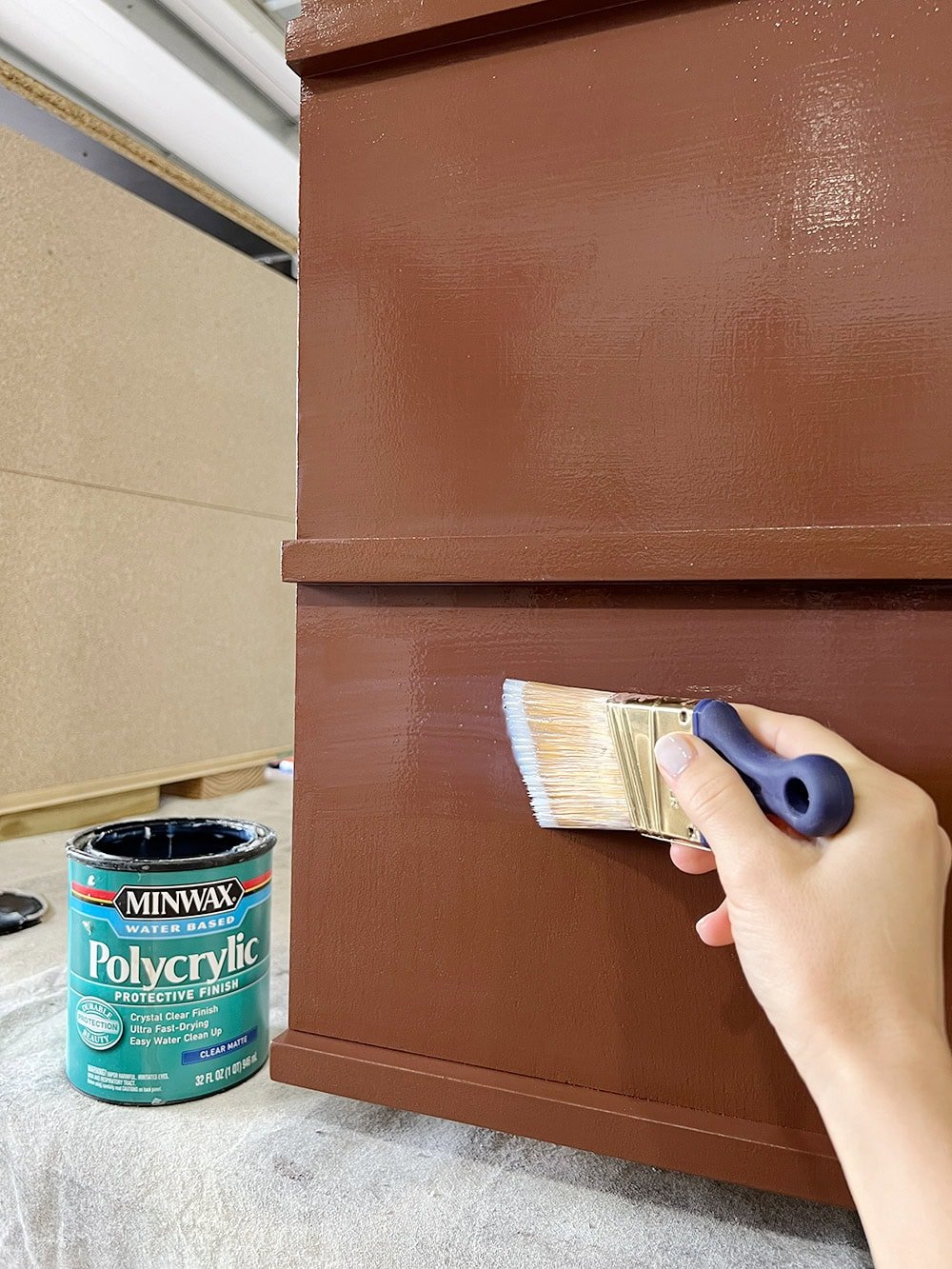
Can’t forget the hardware! These brass knobs are a favorite affordable find.
The Reveal
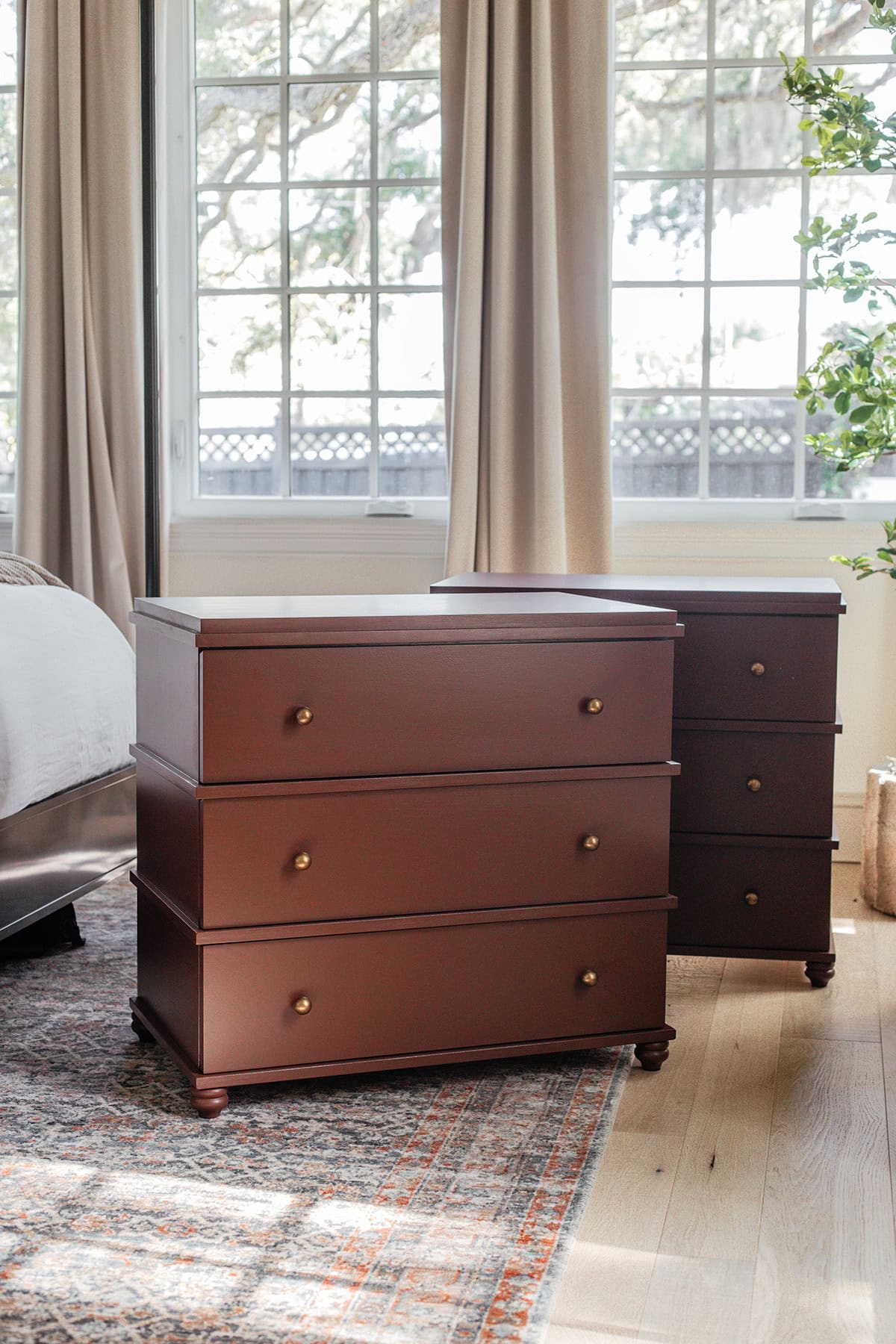
I cannot get over this color. It’s truly the perfect mix of brown and burgundy.
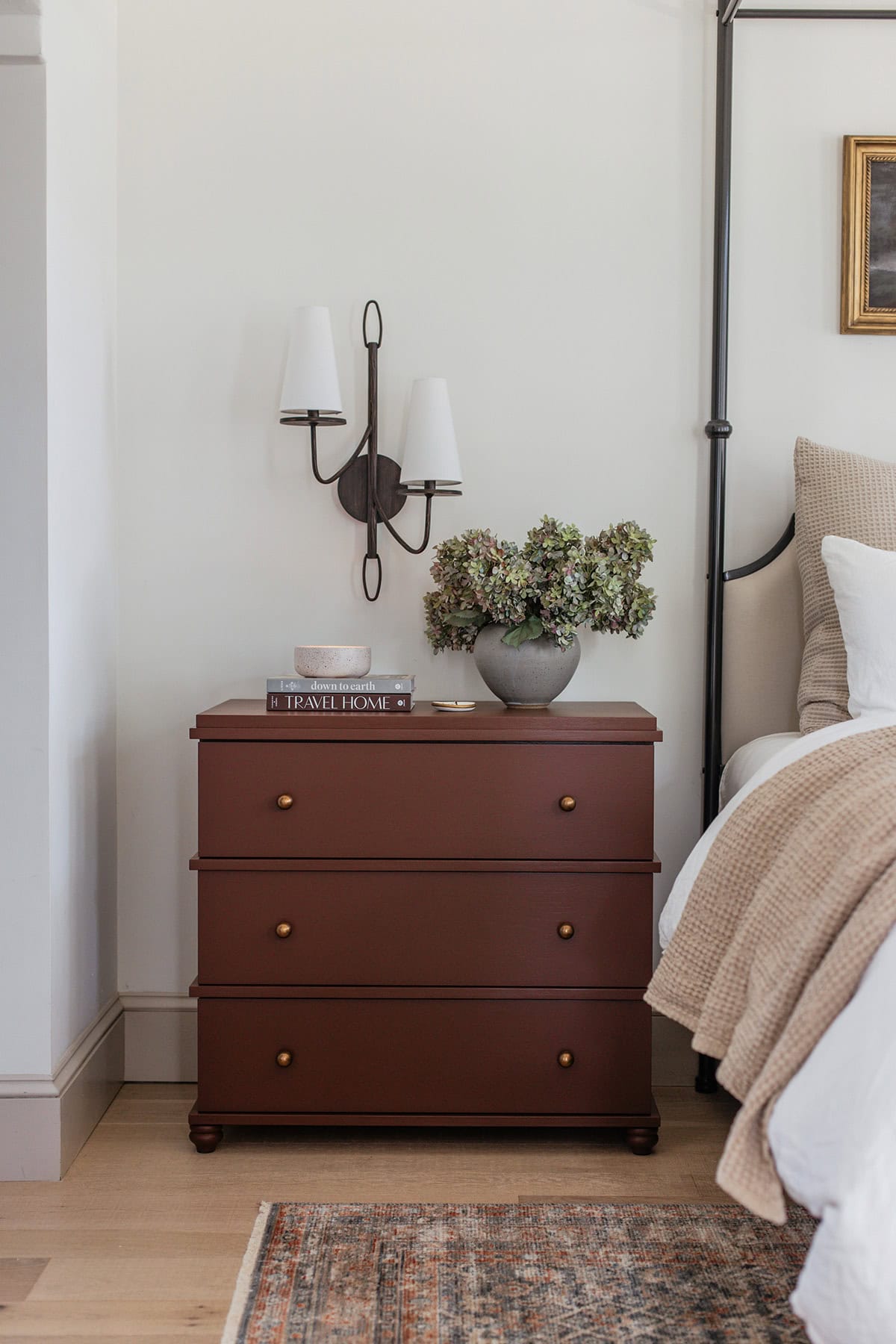
This makeover is just another example of the transformative power of trim and paint.
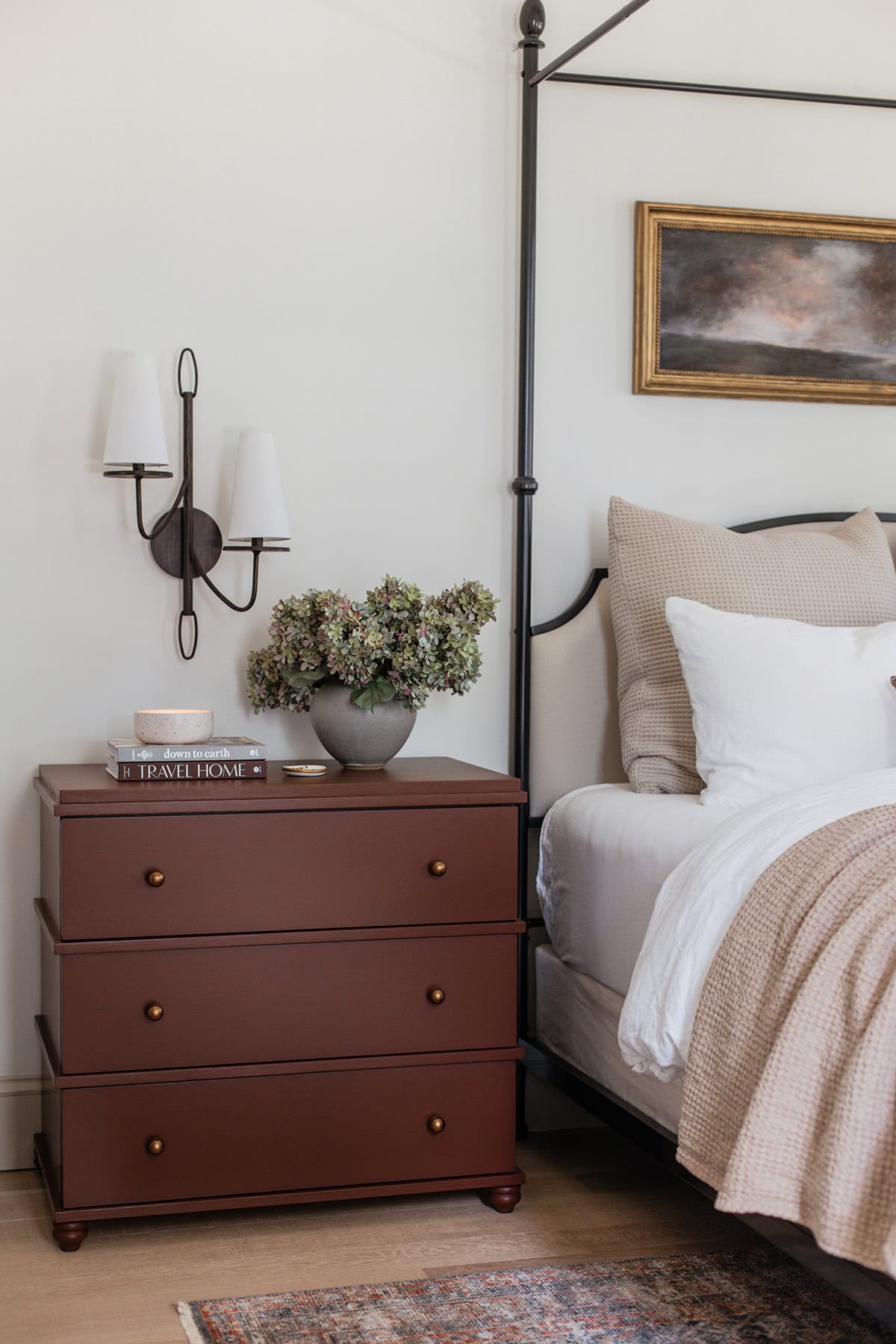
And those dainty brass knobs are the icing on the chocolate cake.
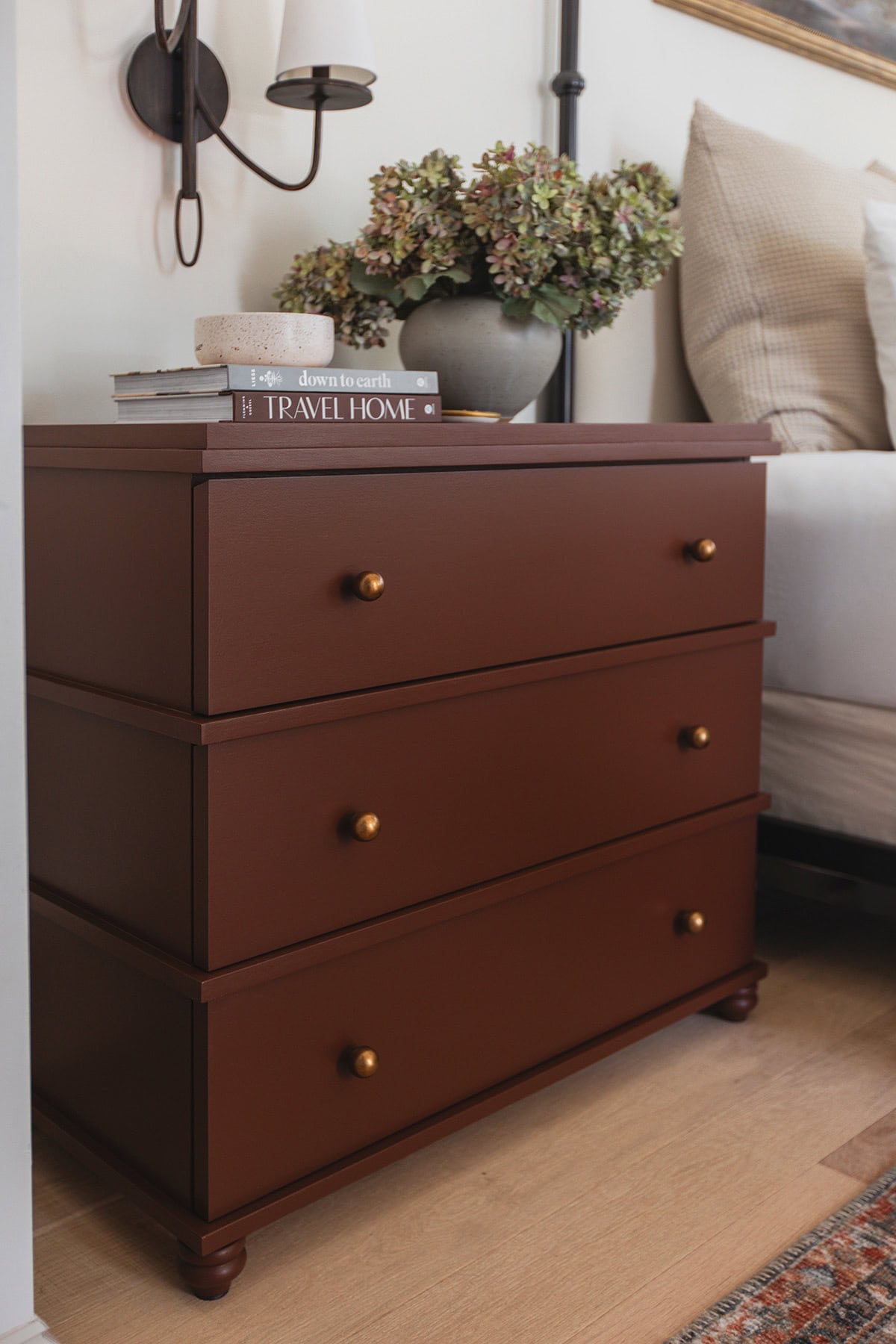
These nightstands were intended for the primary suite in the new house renovation, but I’m almost wishing they could stay in our room now.
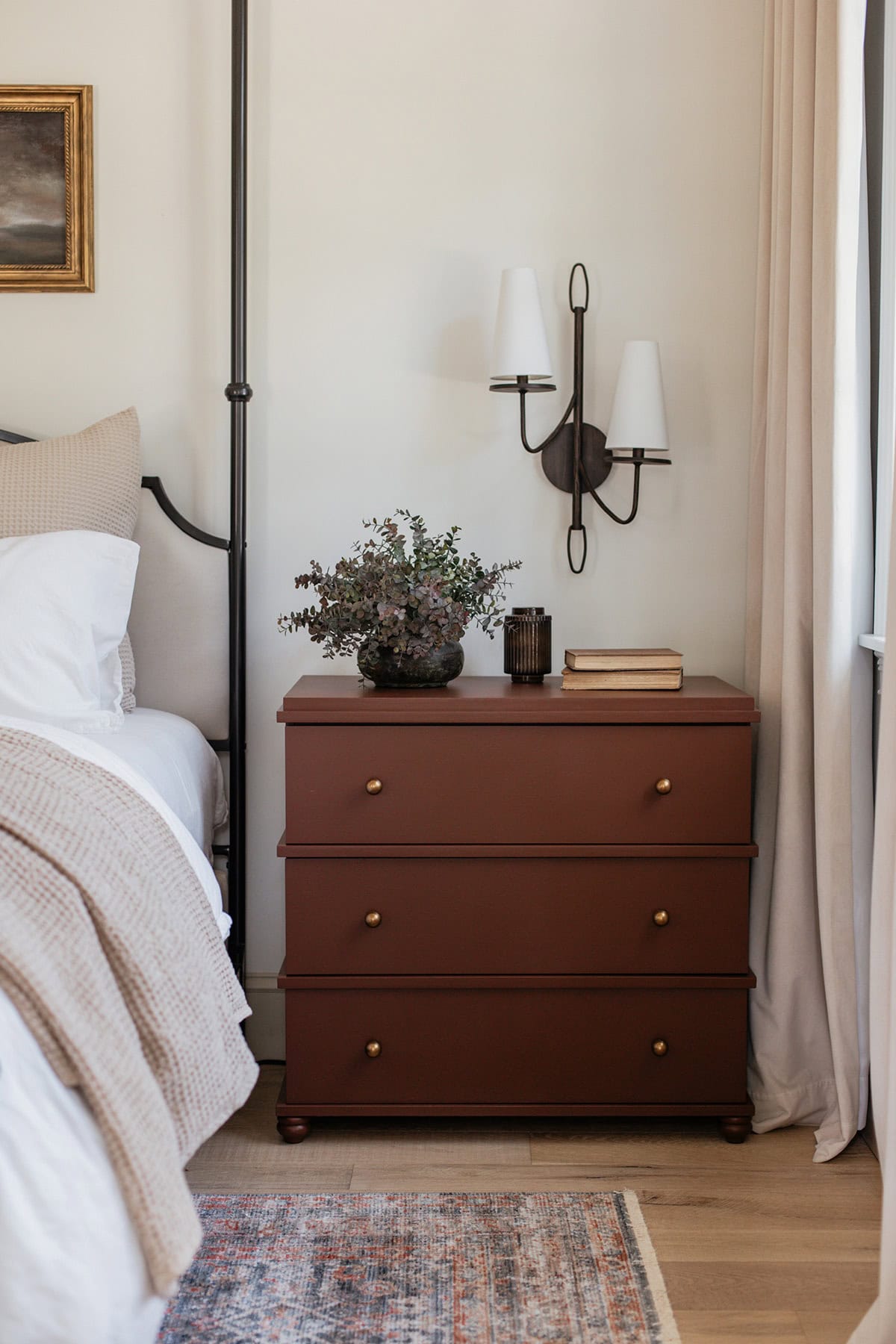
I think I’ll just have to refinish our existing nightstands—I’m in love with this color and the richness it adds.
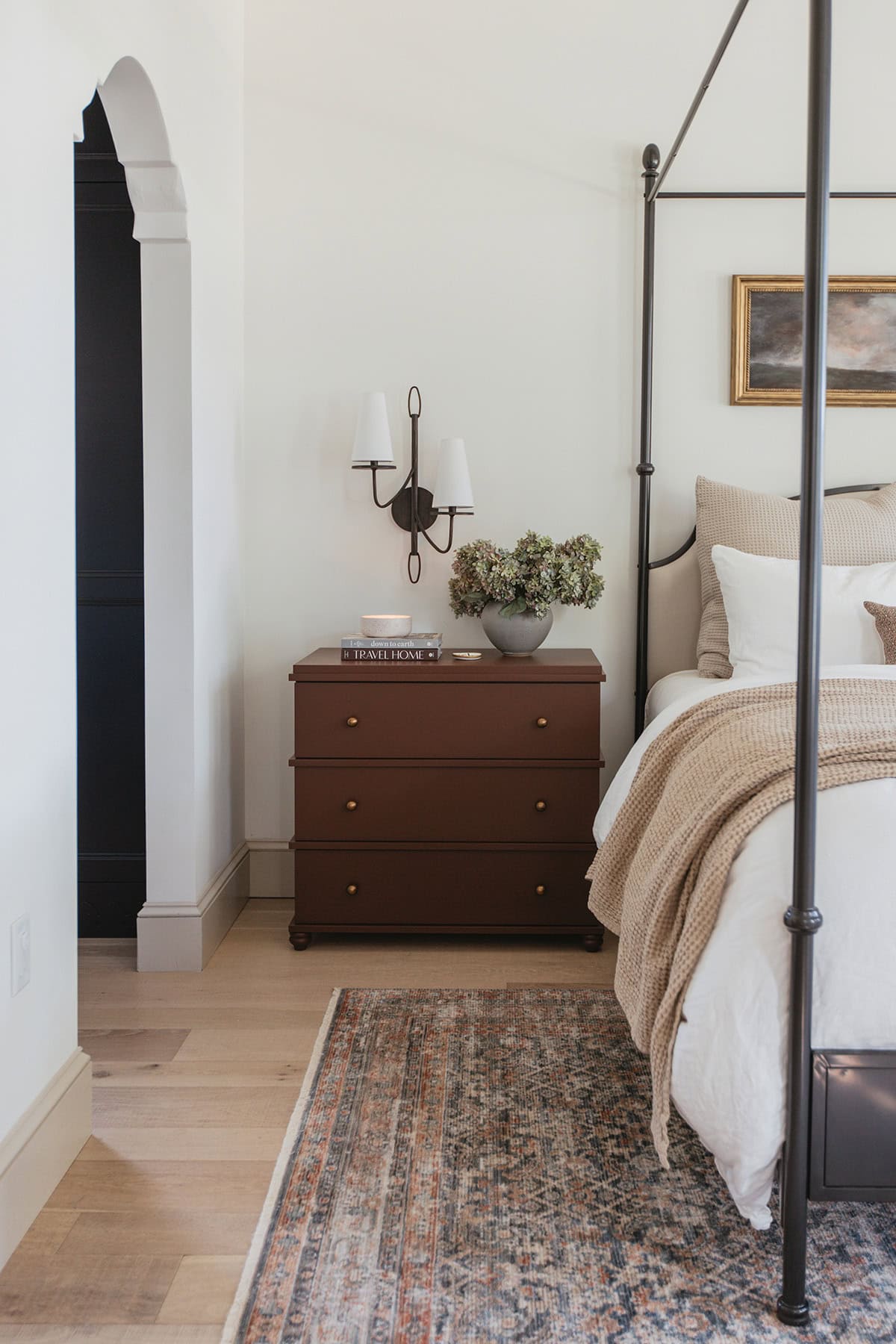
Anyone else ready to paint something dark brown now? Let’s do it!


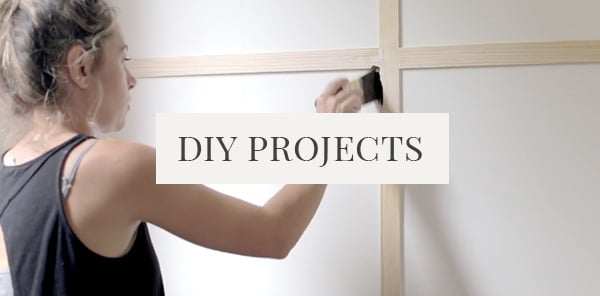
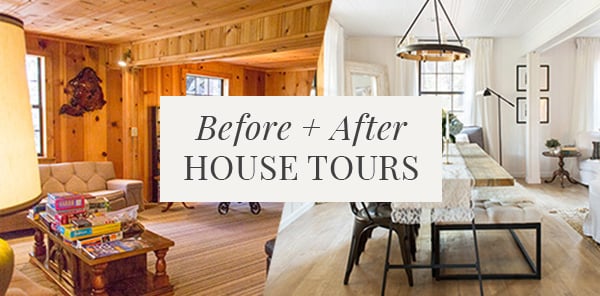


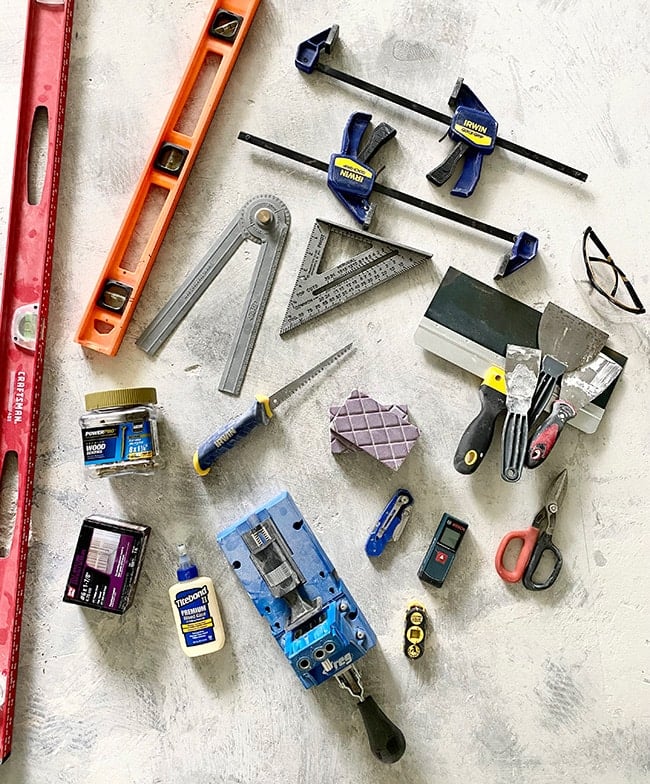
Steve says
Did you use a gallon or a quart of the paint?
Jenna Sue says
I had a gallon, but used probably less than 1/3rd of it.
Laurence says
Hi ! Can I ask what saw did you use to make the smaller cut ? Did the wood hold on fine ? Its gorgeous ! Thank you !!
Jenna Sue says
Hi! Miter saw for the smaller cuts. The trim is solid!
pbdcal says
You’ve done it again! So imaginative. You never fail to inspire me!
Deborah says
I have some Malm nightstands and chest. I have been trying to figure out what to do with them to make them not look like IKEA! I am ready for a high end look, but my budget isn’t ready. lol! This is the classiest Malm makeover I have seen! Most makeovers I see while nice still look like Malm dressers! This completely transformed the Malm! Thank you so much!!
Jenna Sue says
So glad you found this tutorial! I’d love to hear how they turn out if you try it 🙂
Erin says
A master bedroom remodel is on my to-do list this year. I currently have two of the oak Malm dressers as my nightstands. Looks like I’ll be saving myself some $$$ thanks to you because now I can just transform them!!! Thank you once again for a wonderful tutorial!
Jenna Sue says
Yay! The oak Malms will be perfect for this!
Lindsay says
Love it and love your detailed how-to. Could you provide source for the sconce? Beautiful.
Jenna Sue says
Thank you! You can find all of the bedroom sources linked here: https://www.jennasuedesign.com/shop/heights-house/primary-bedroom/
SH says
So creative and a nice look, not to mention the extra storage. (Drats–we used to have Malm stuff). You really understand how to do tutorials and what readers would need to know. But one question: Which sandpaper did you use to remove the original brown stain? 100 or 1220?
Jenna Sue says
Thanks so much! We used 100 but 120 should work fine too.
Cici Haus says
Stunning and so clever!
Jenna Sue says
So glad you like it Cici!
Terry says
Oh I like those a lot!! The color is beautiful!
Jenna Sue says
Thank you Terry!
Carolyn Kellam says
Beautiful! Very clever!
Jenna Sue says
Appreciate it Carolyn!
Bethany says
Love this!! Thank you!!
Jenna Sue says
Glad you like it Bethany 😀
Jessica says
Wow the night stands are beautiful! Thank you for sharing affordable hacks and the step by step tutorials.
Do you have an estimate of how many hours of labor (not including drying time) went into making this set of nightstands?
Jenna Sue says
So glad you like it, Jessica! It’s hard to say exactly as we worked on it over the course of 4 days, but if I had to guesstimate I’d say maybe 6-8 hours total for both nightstands?